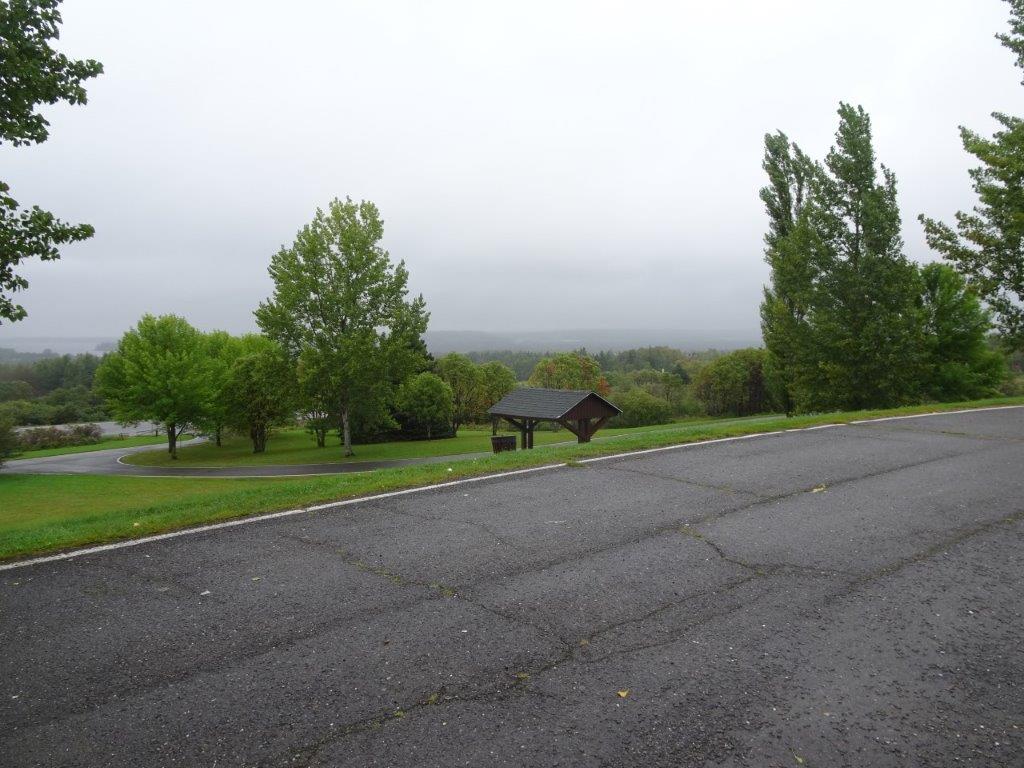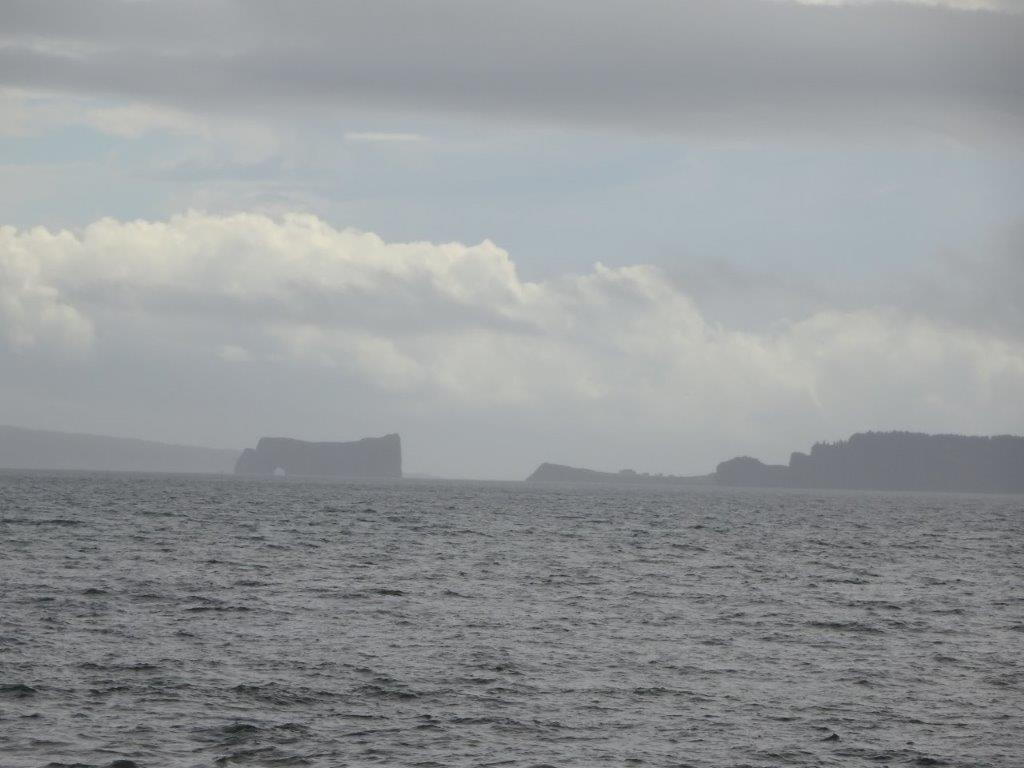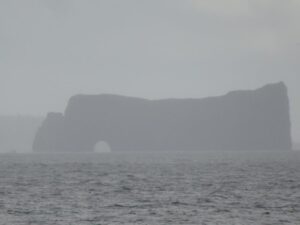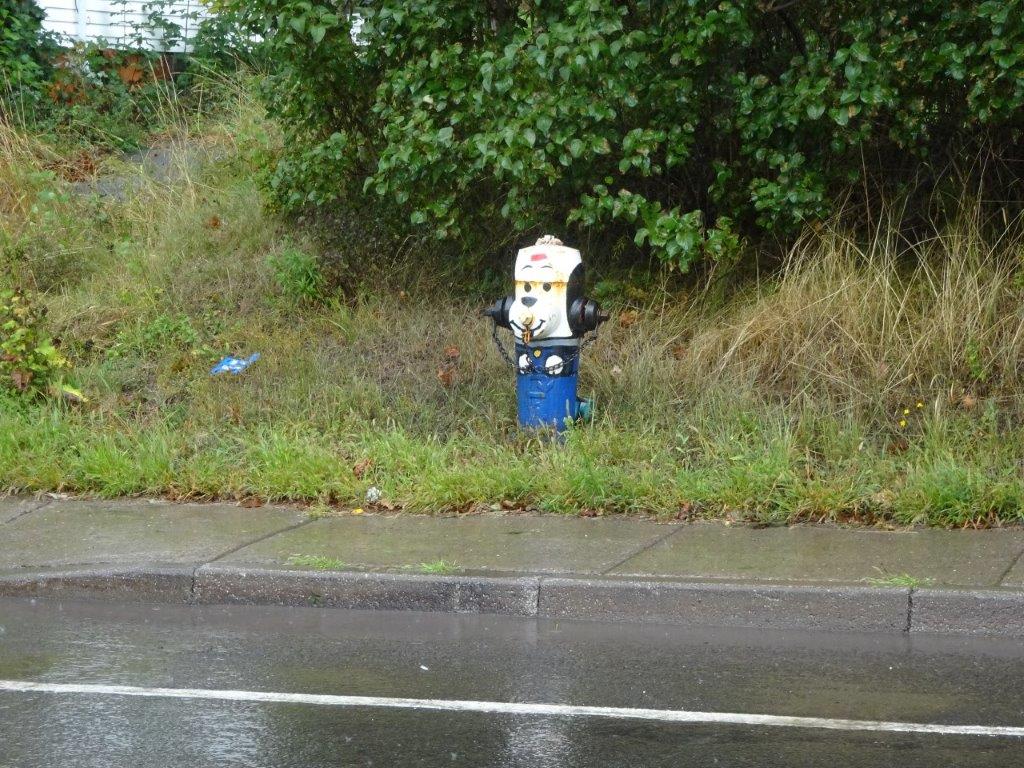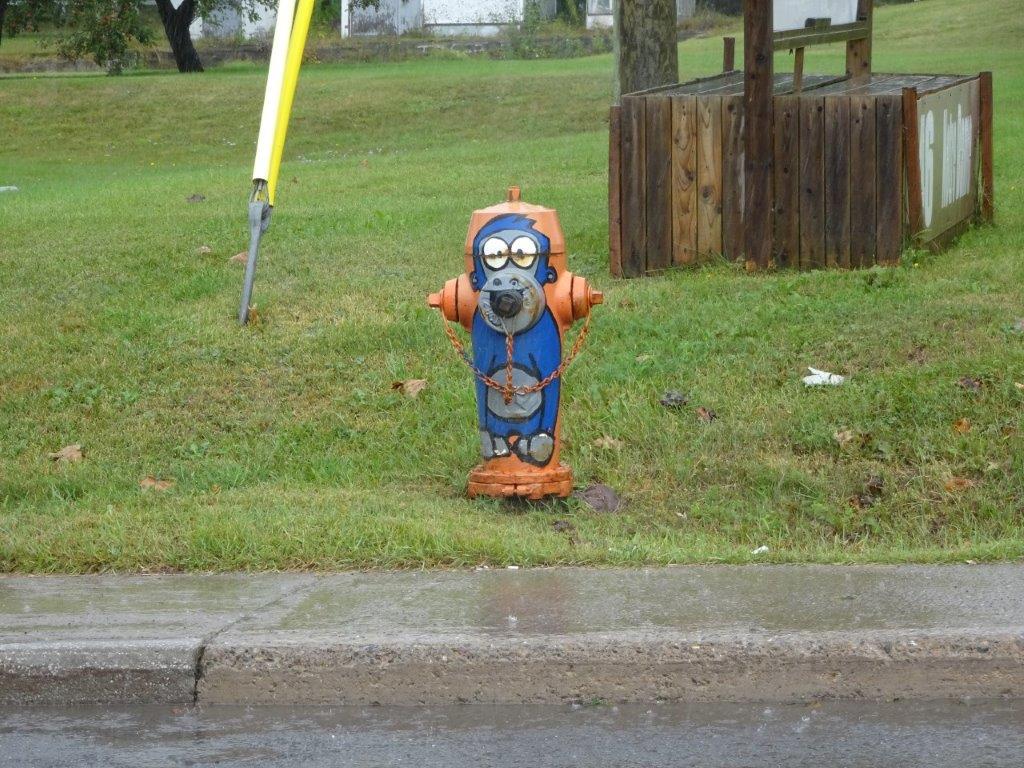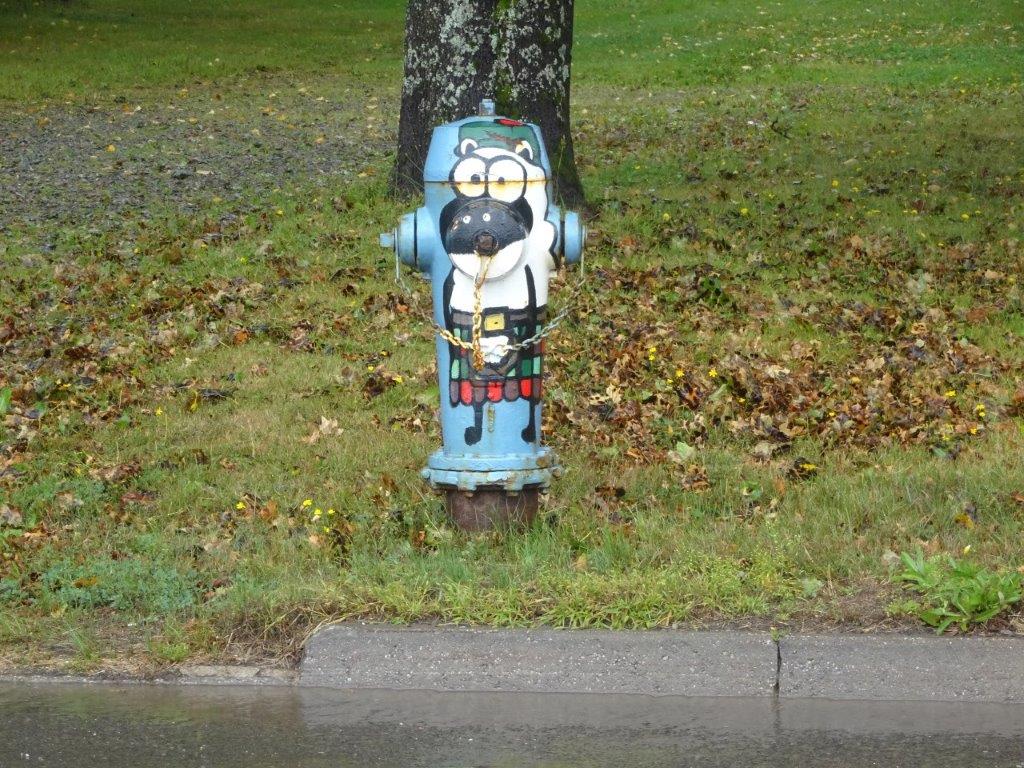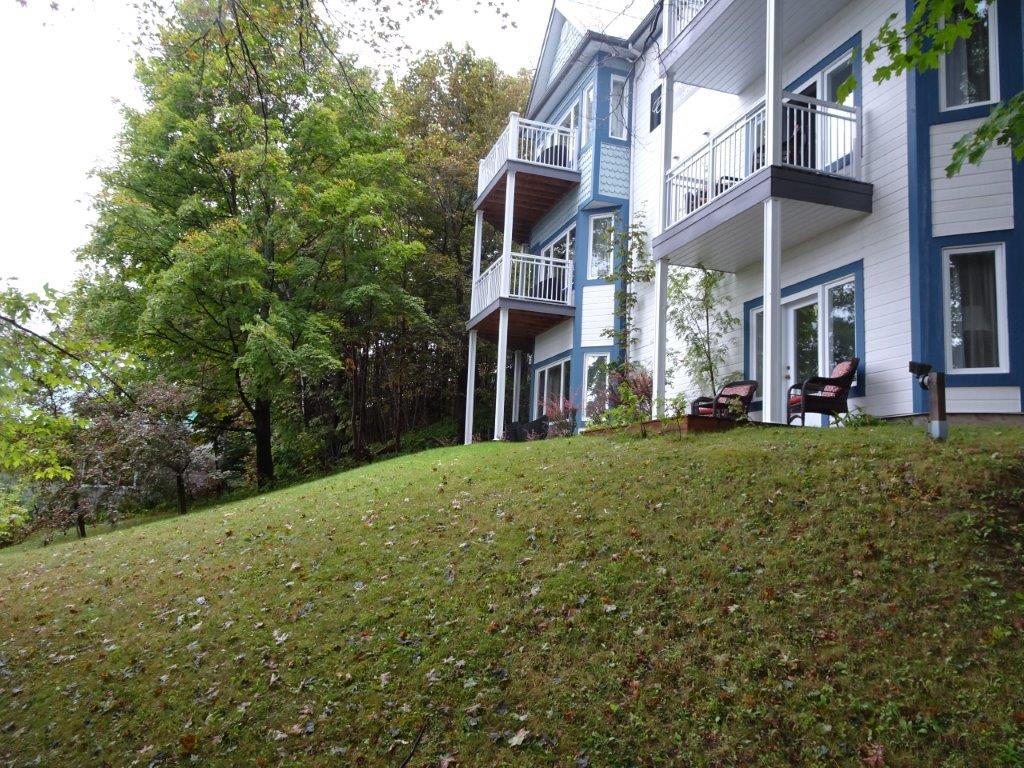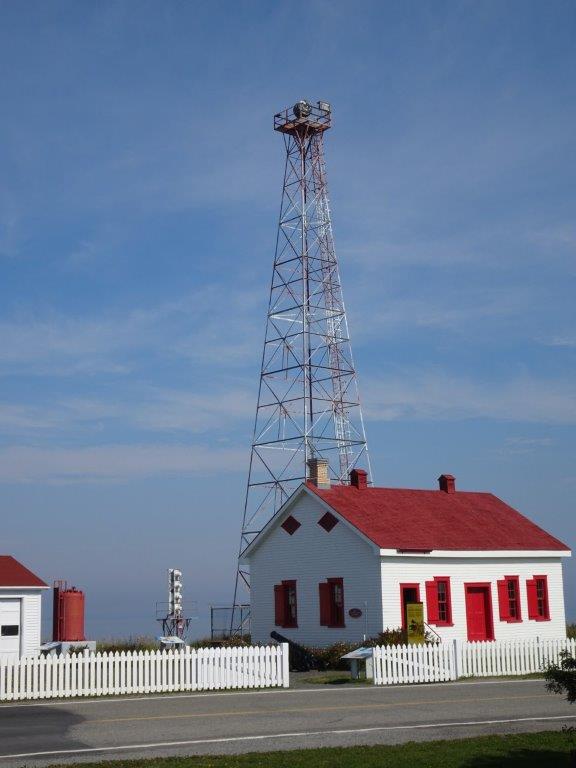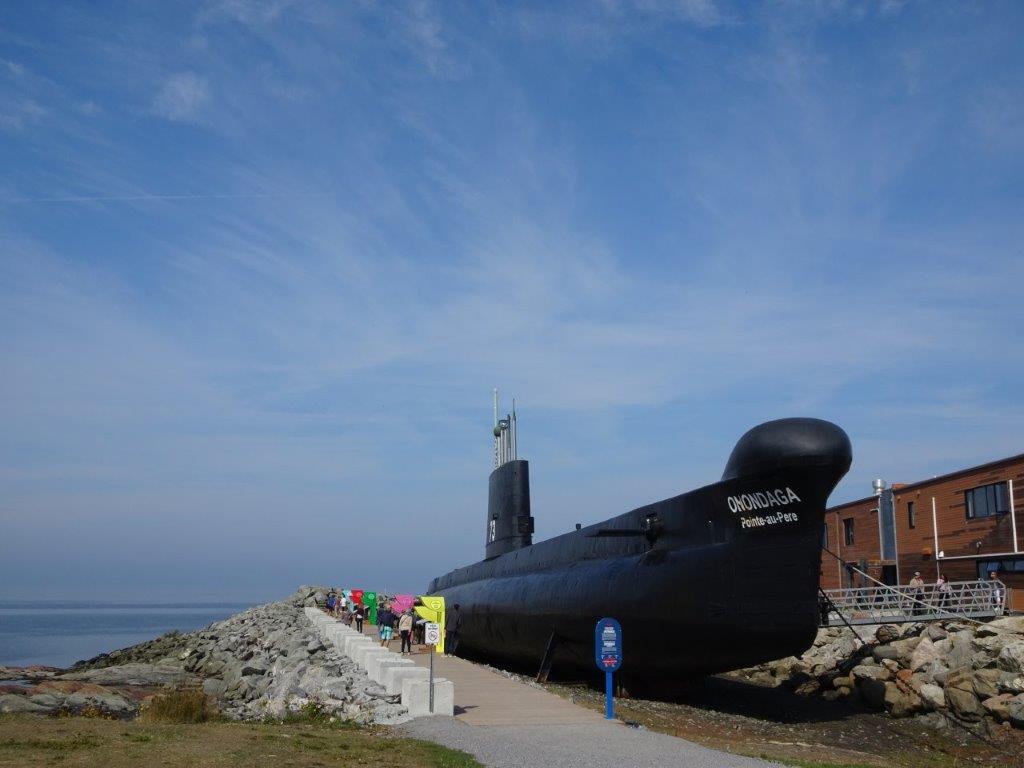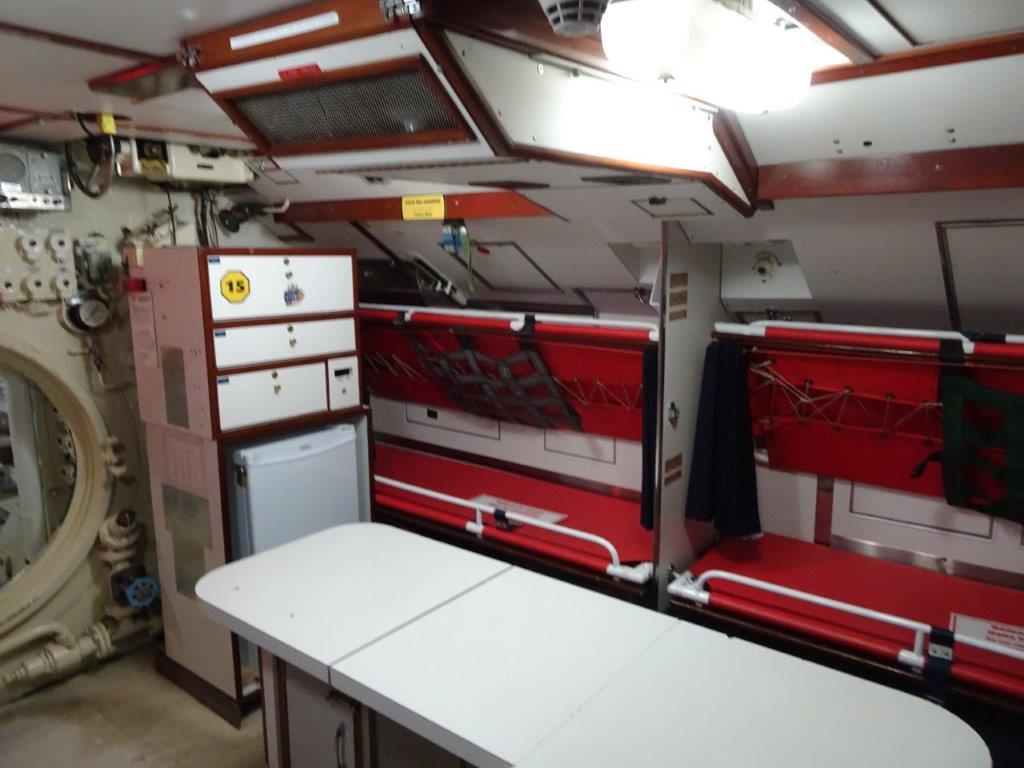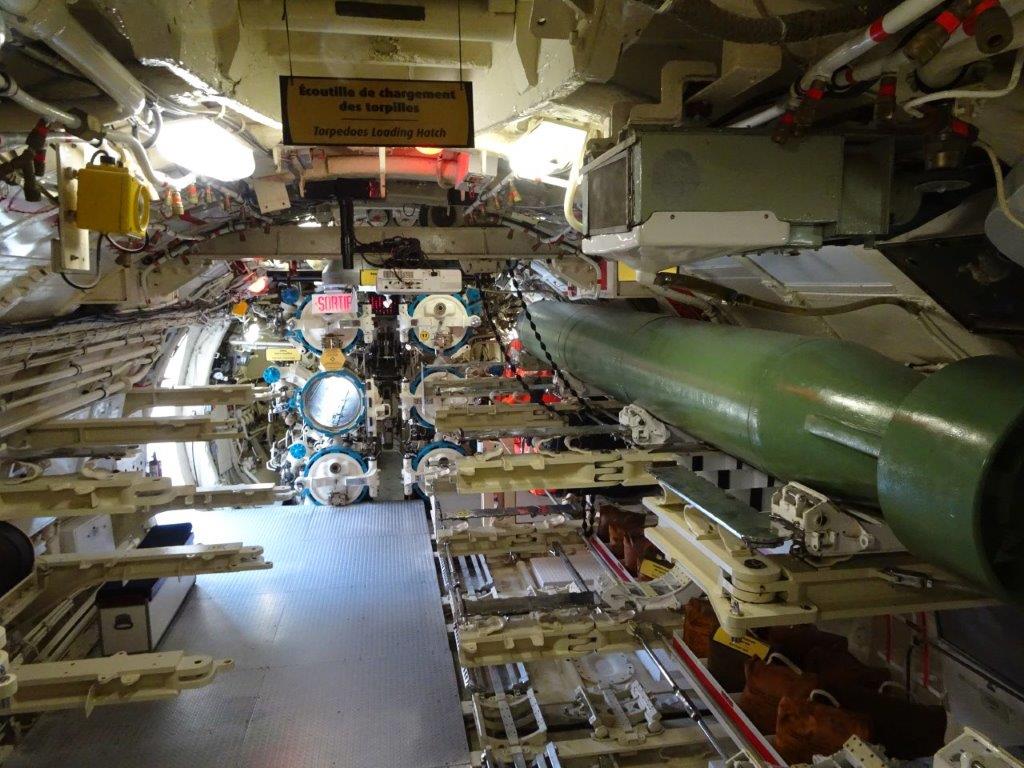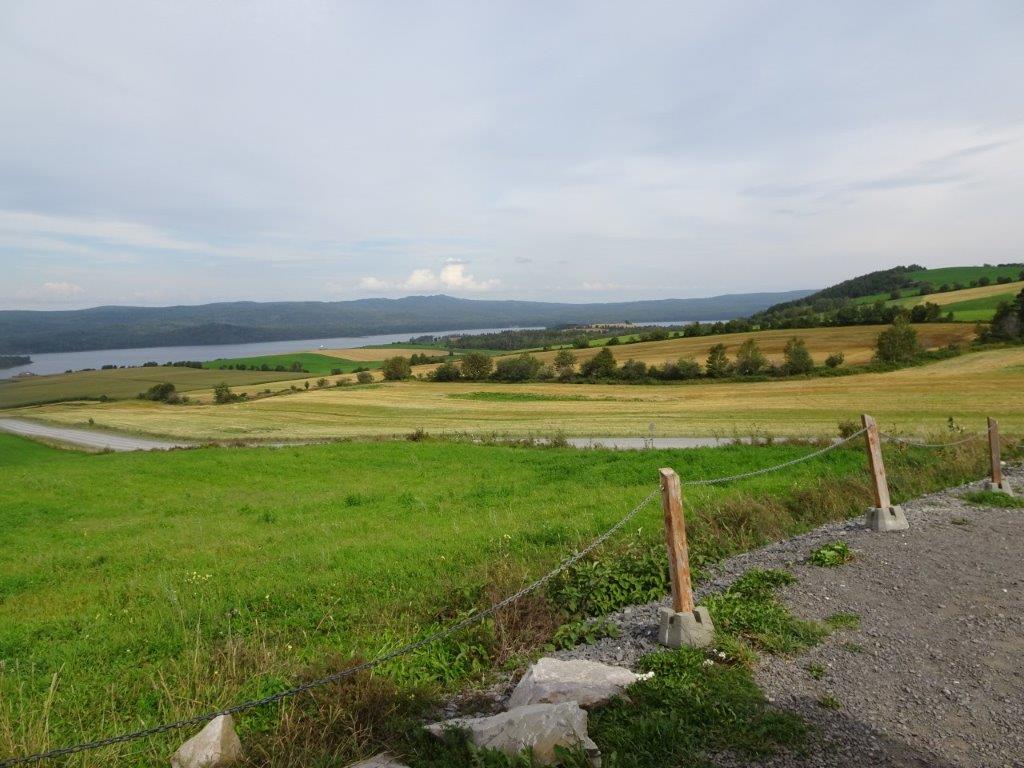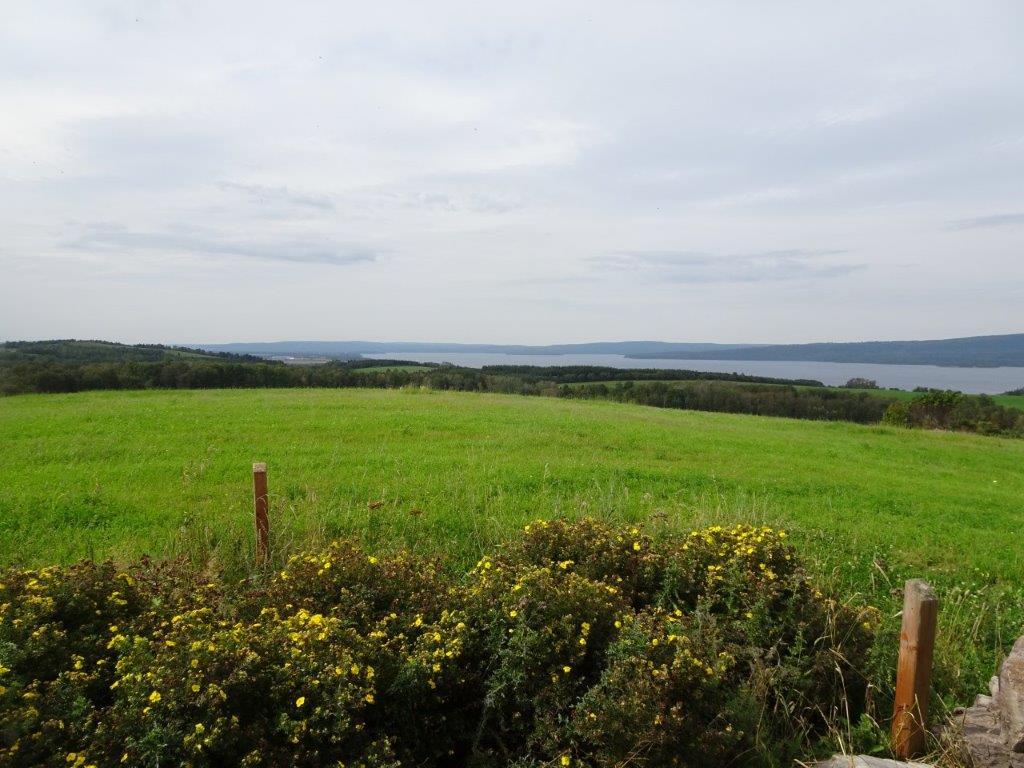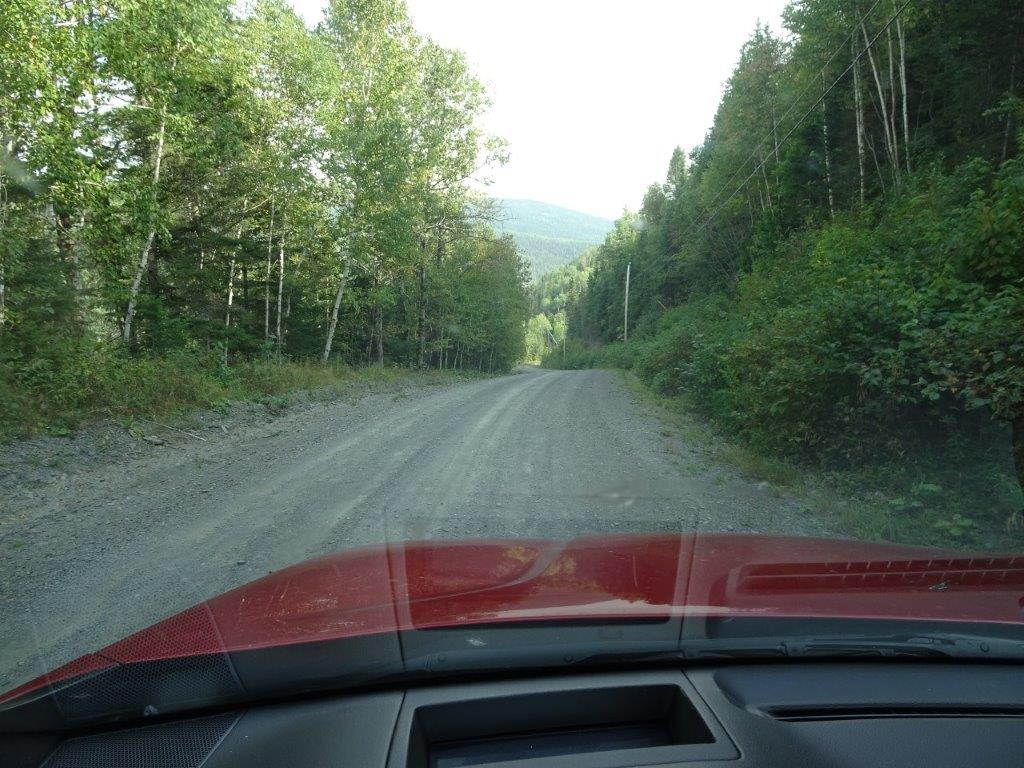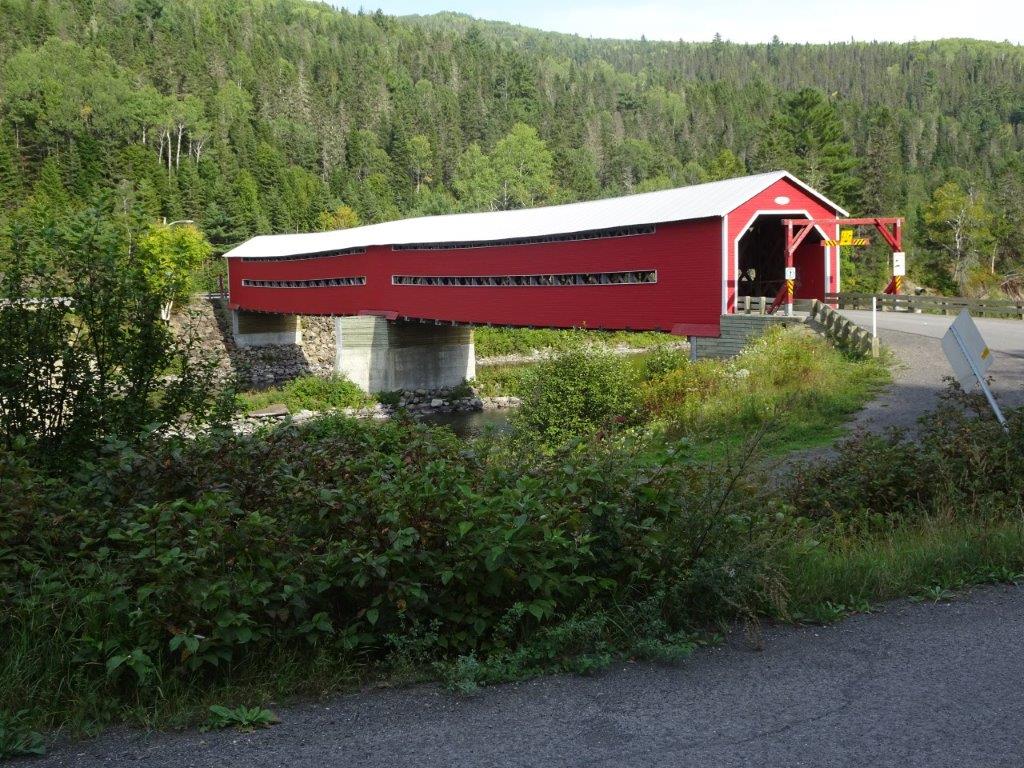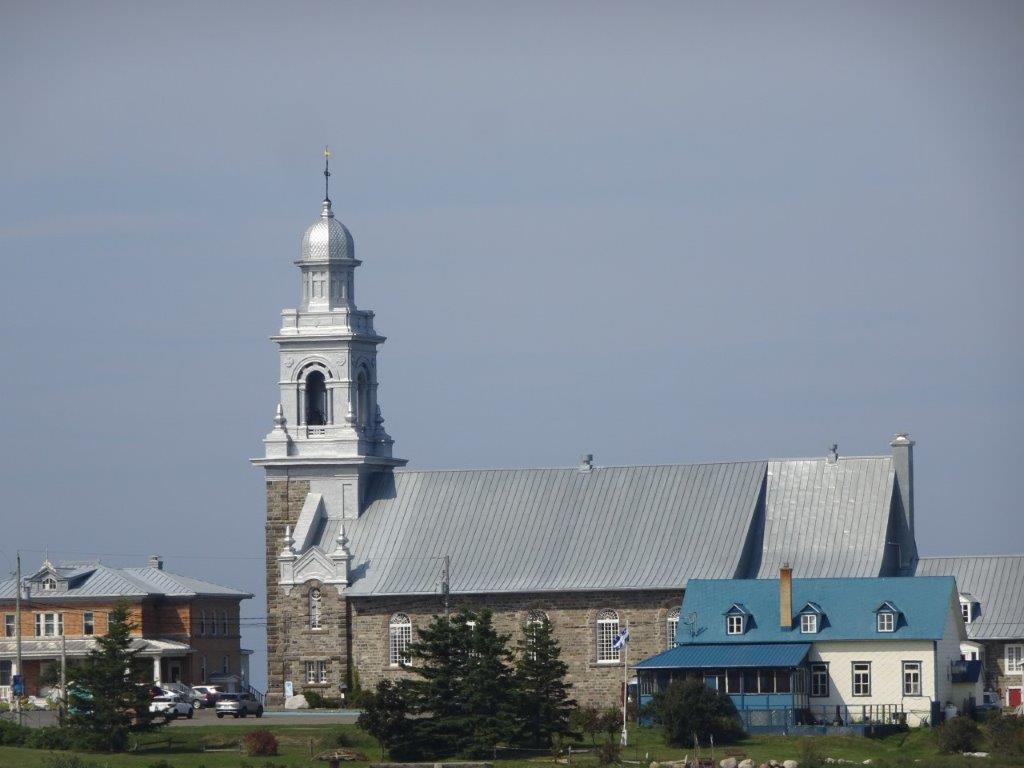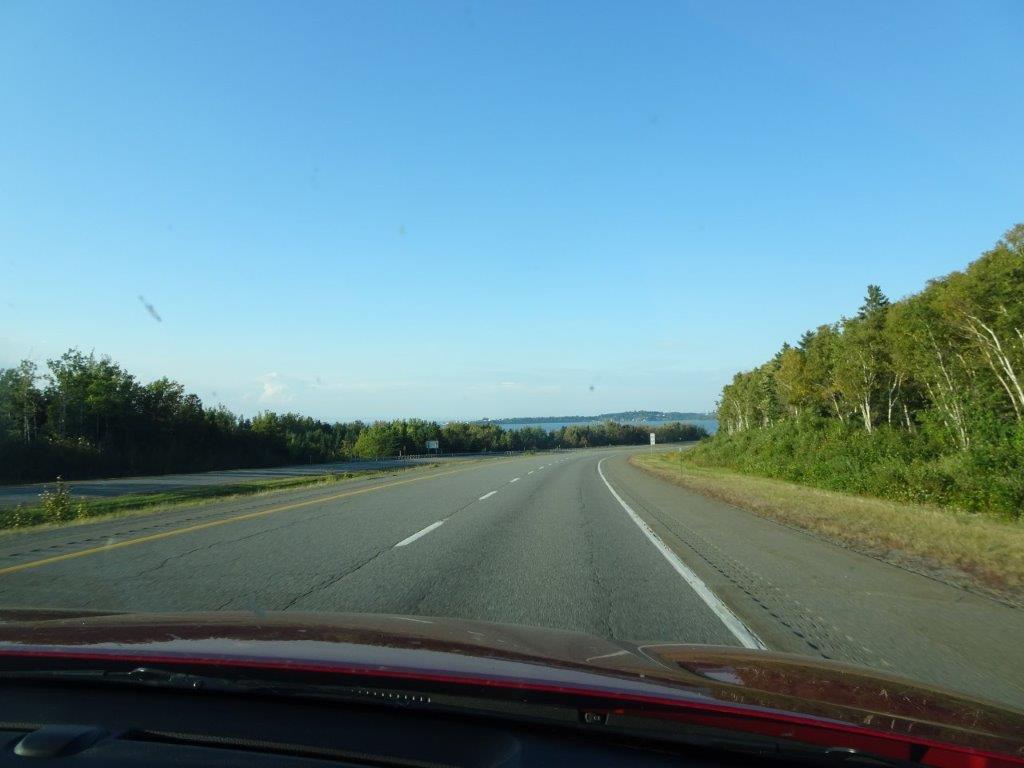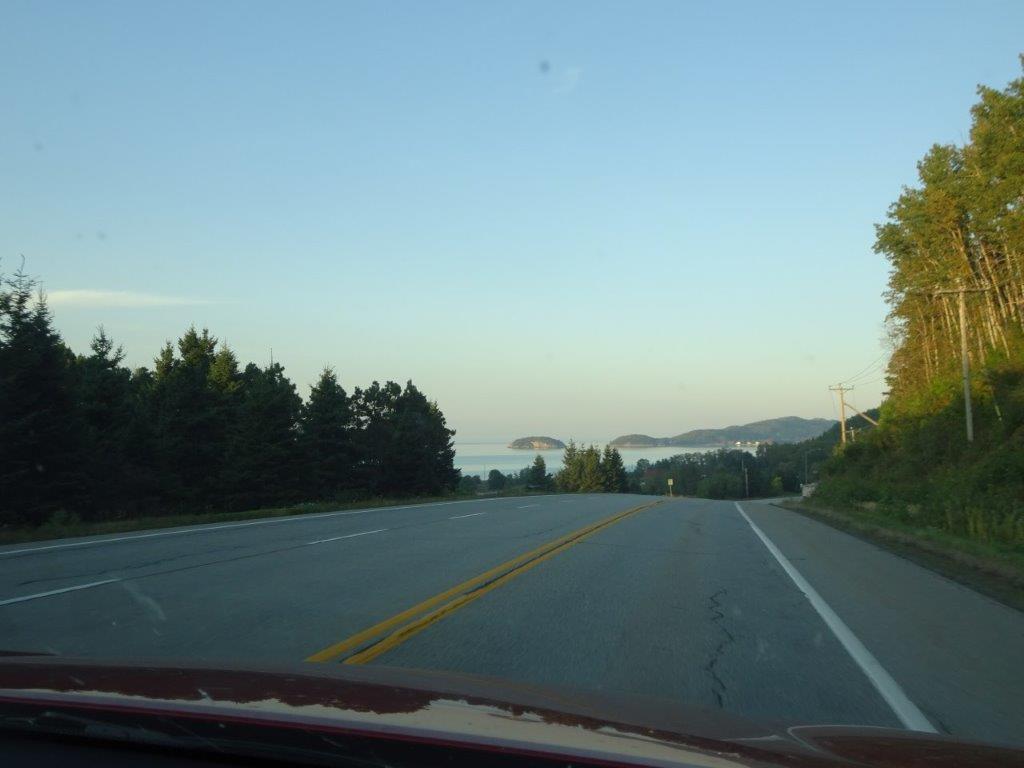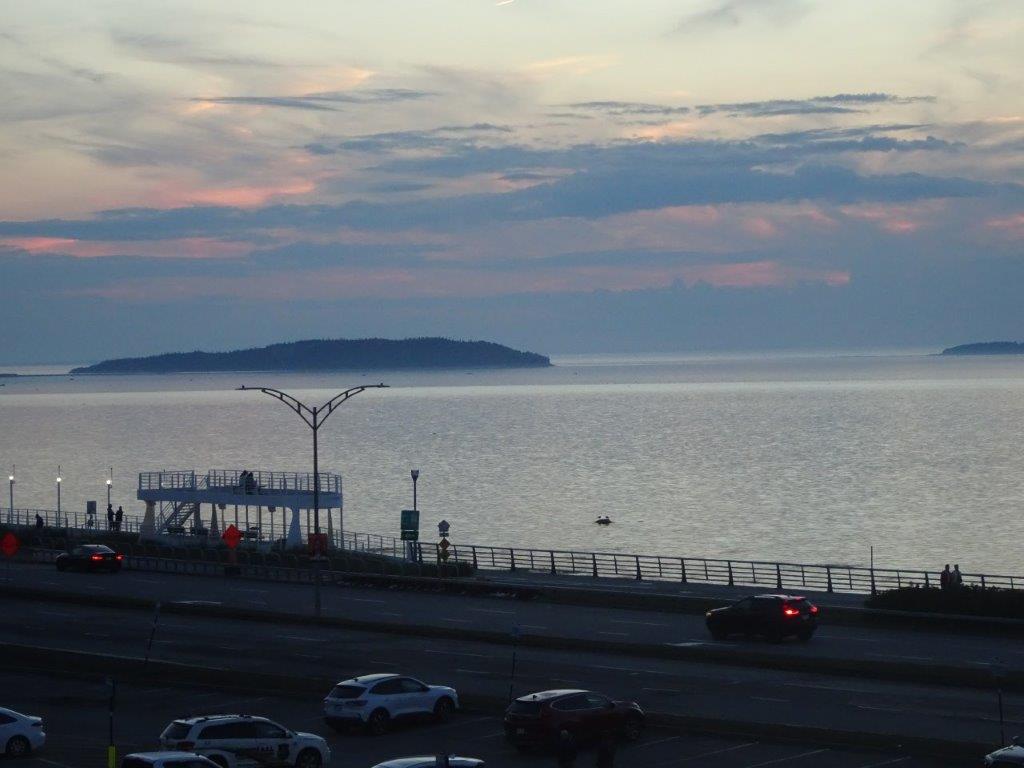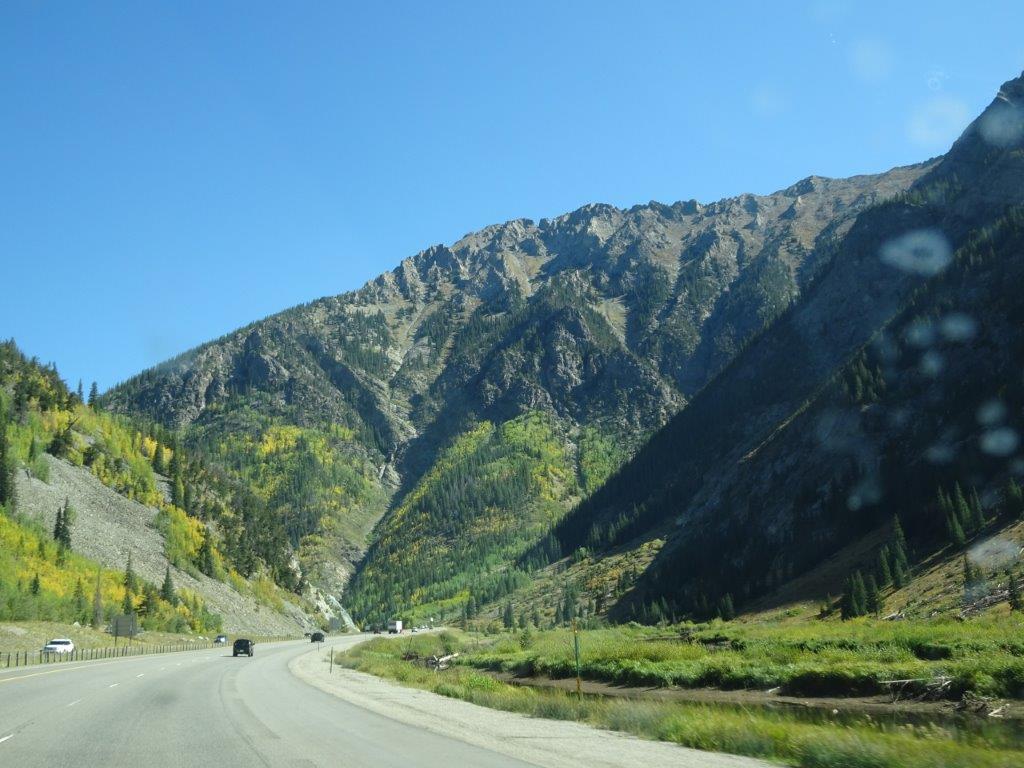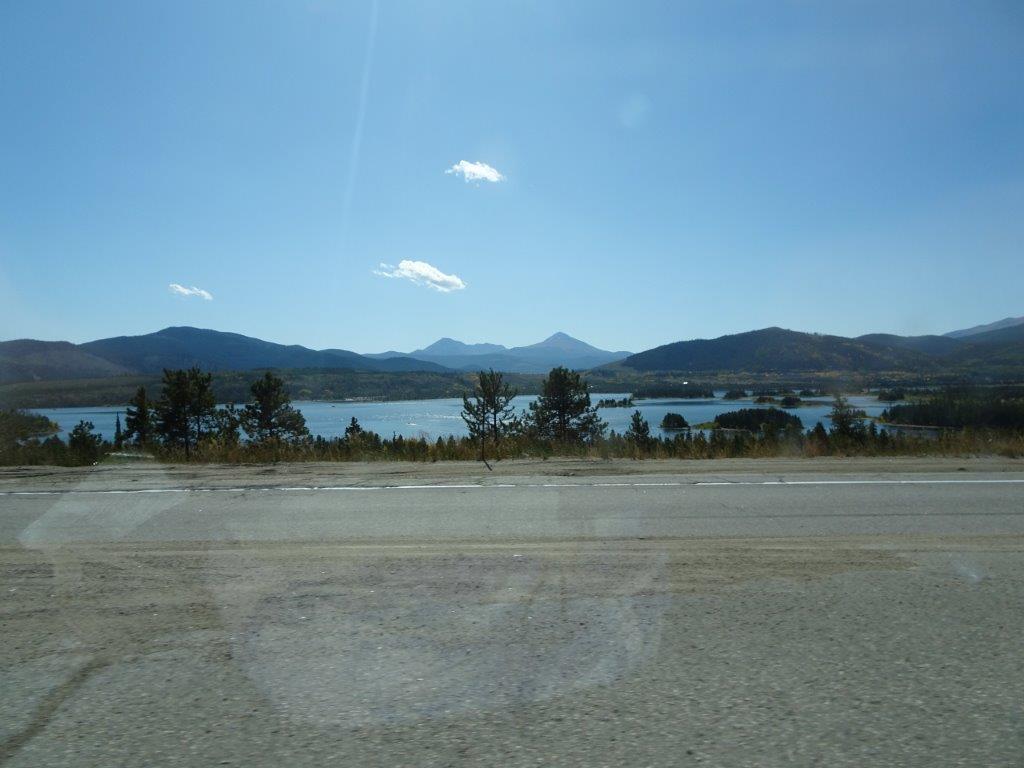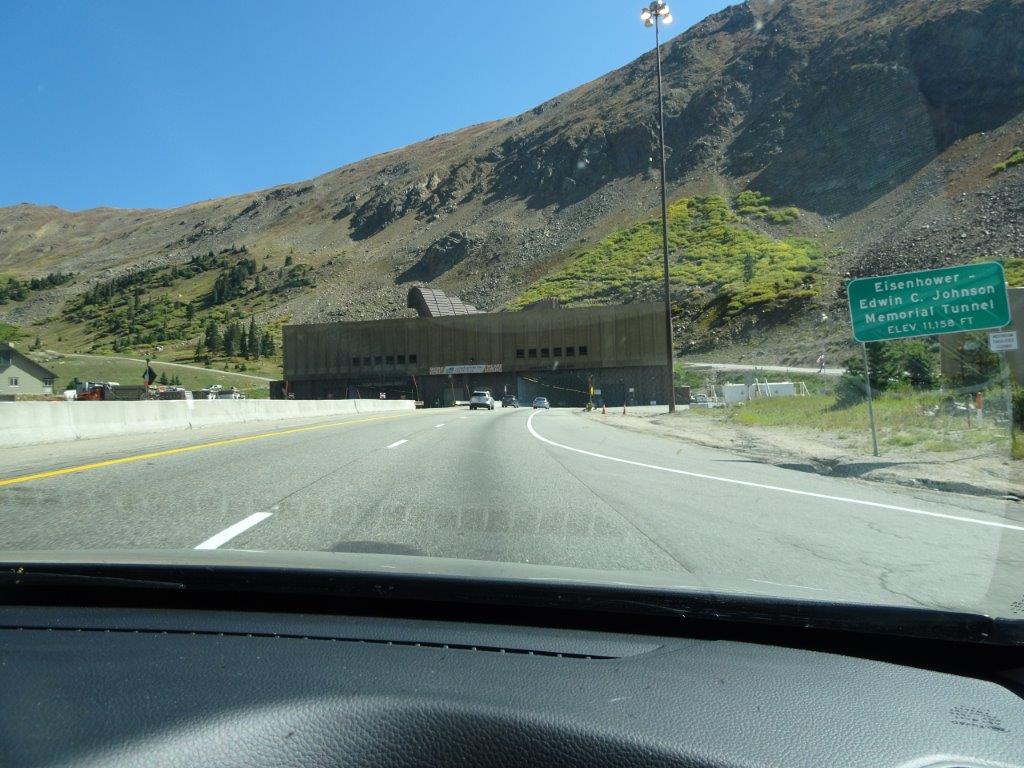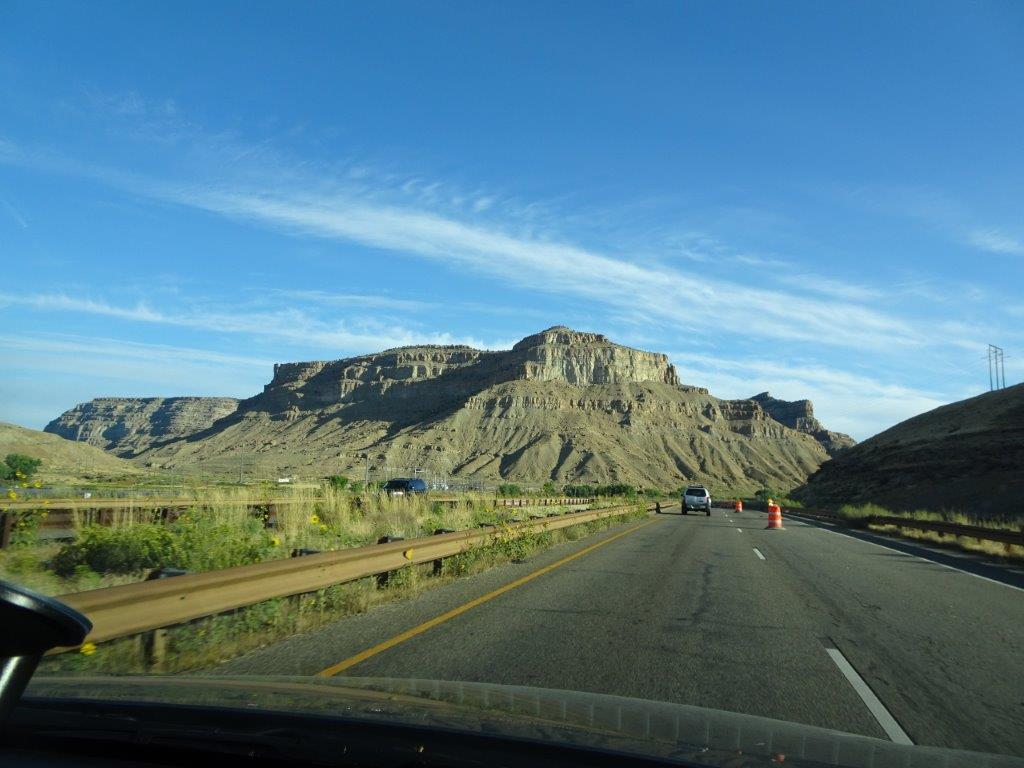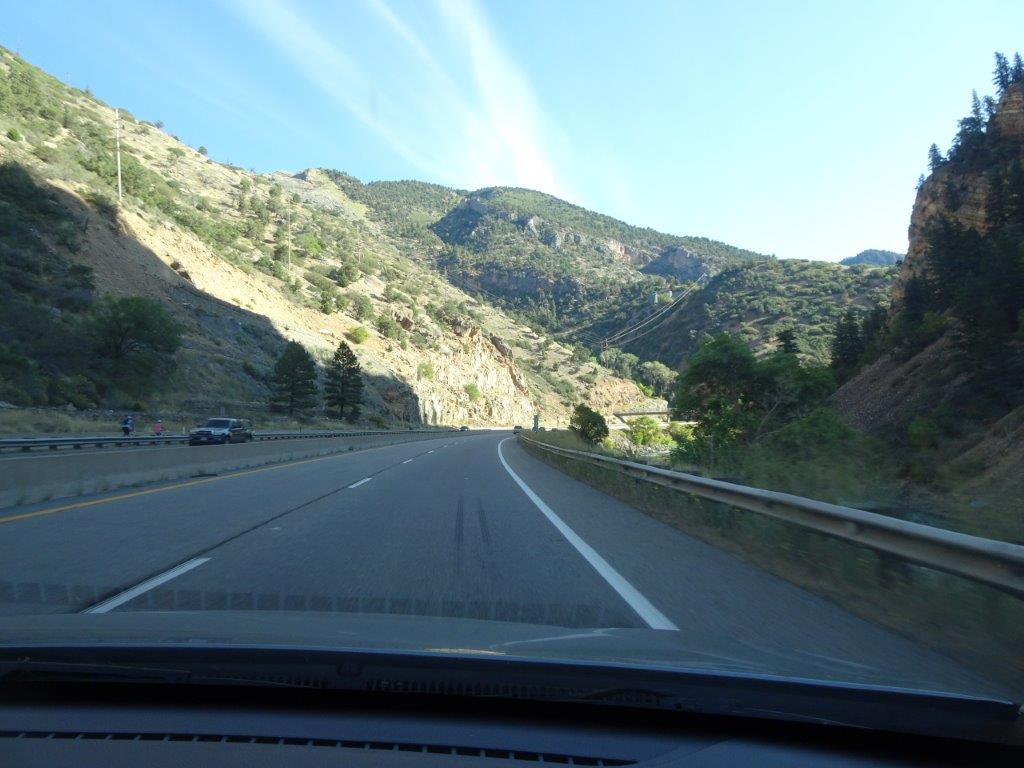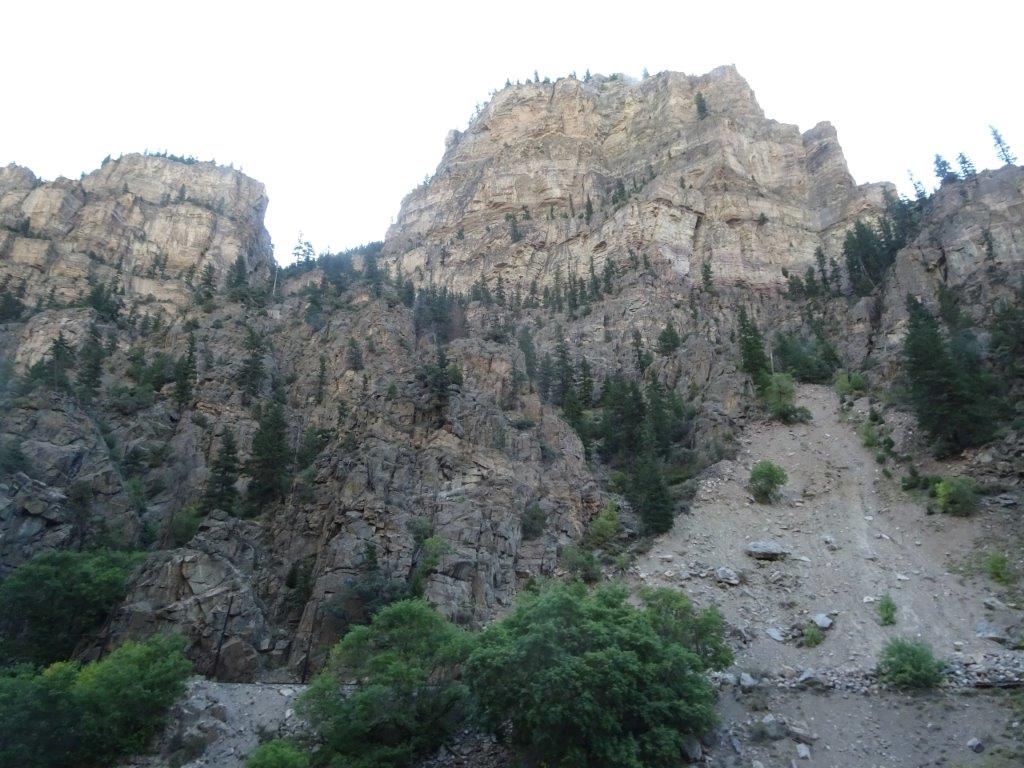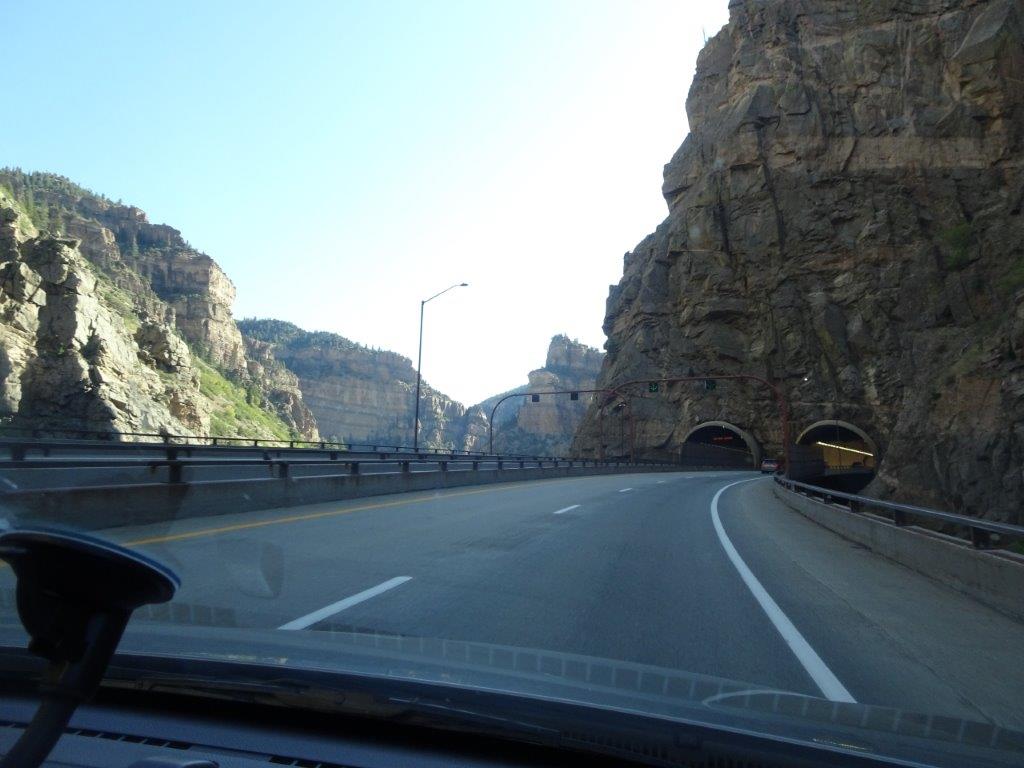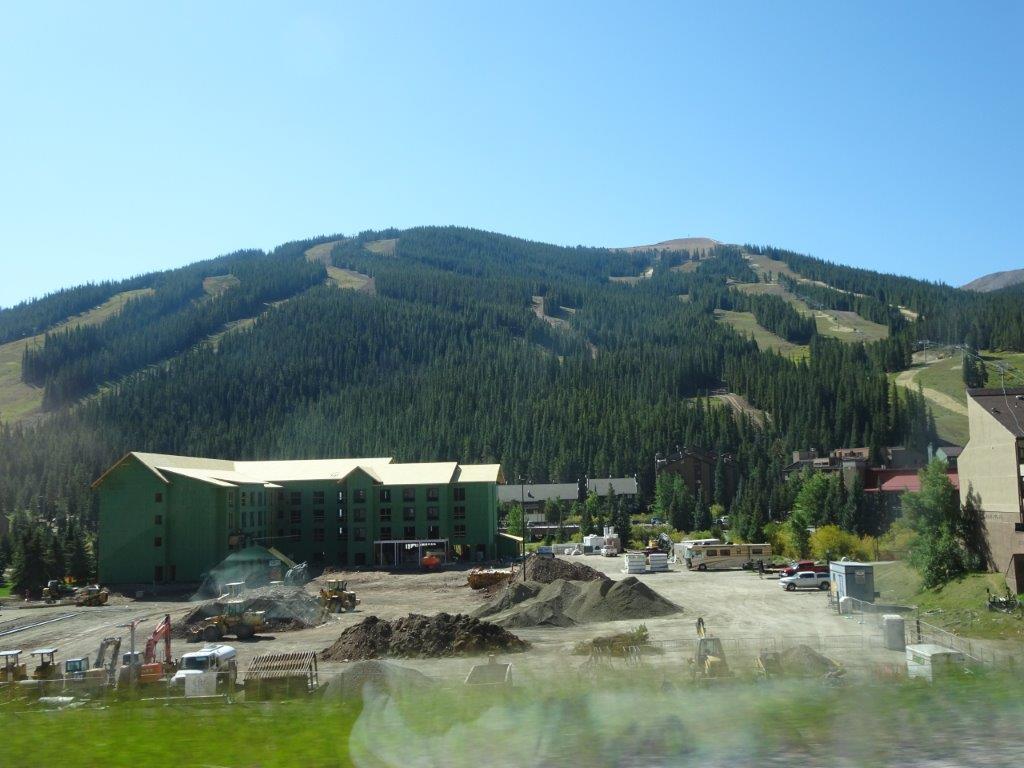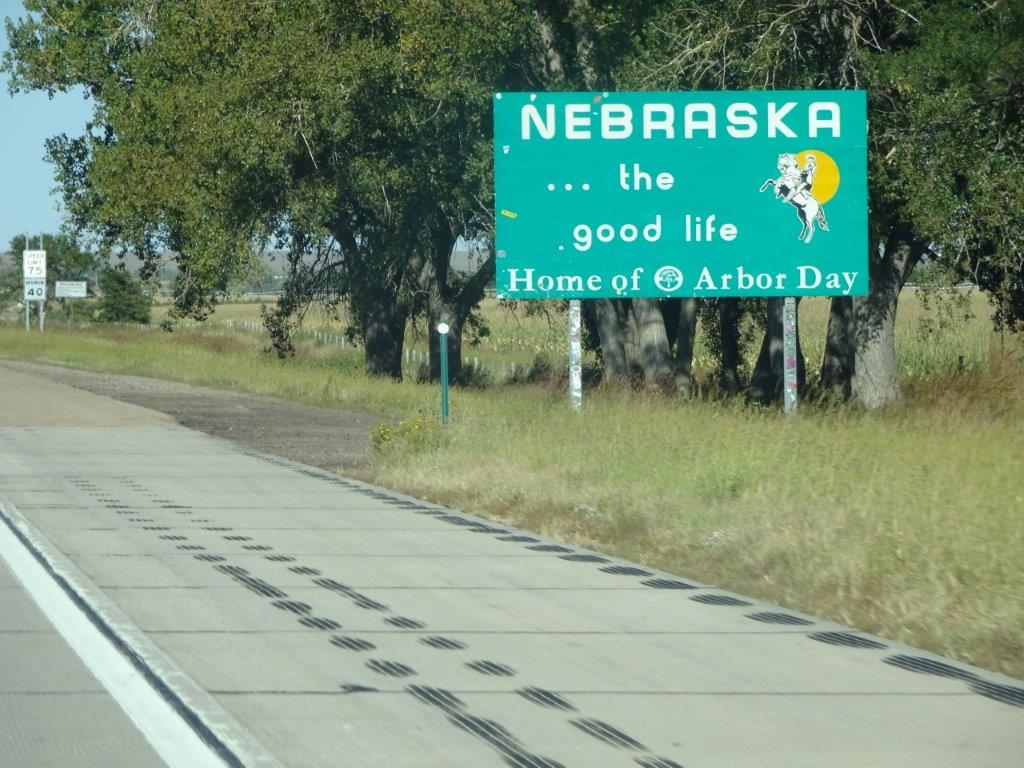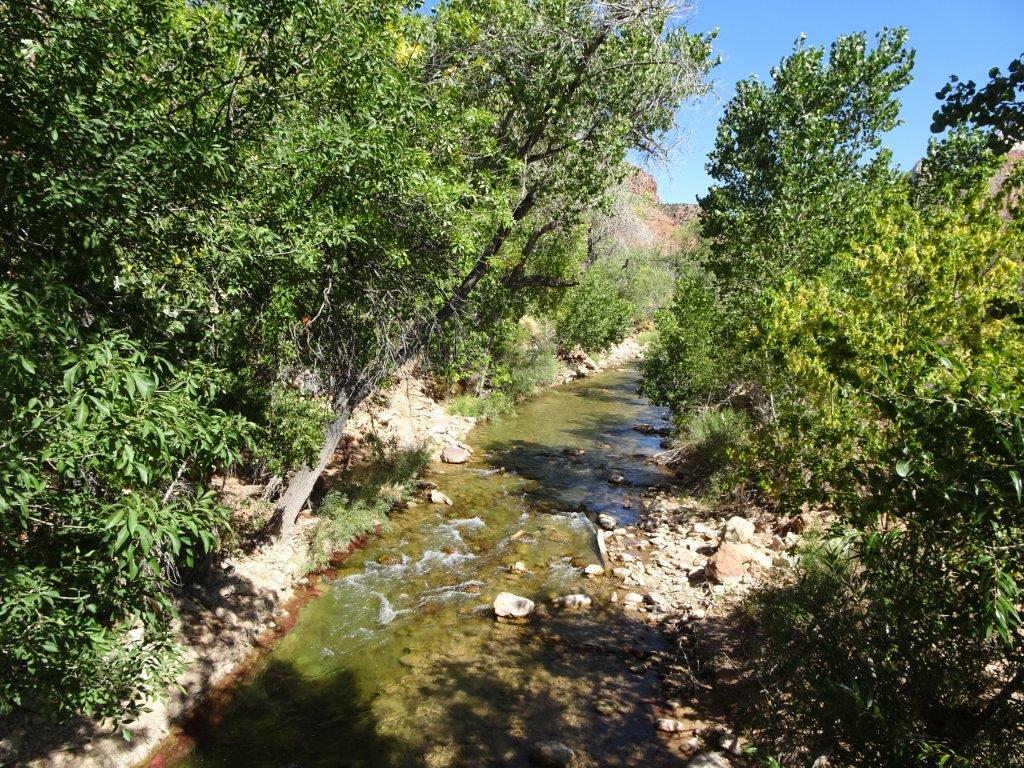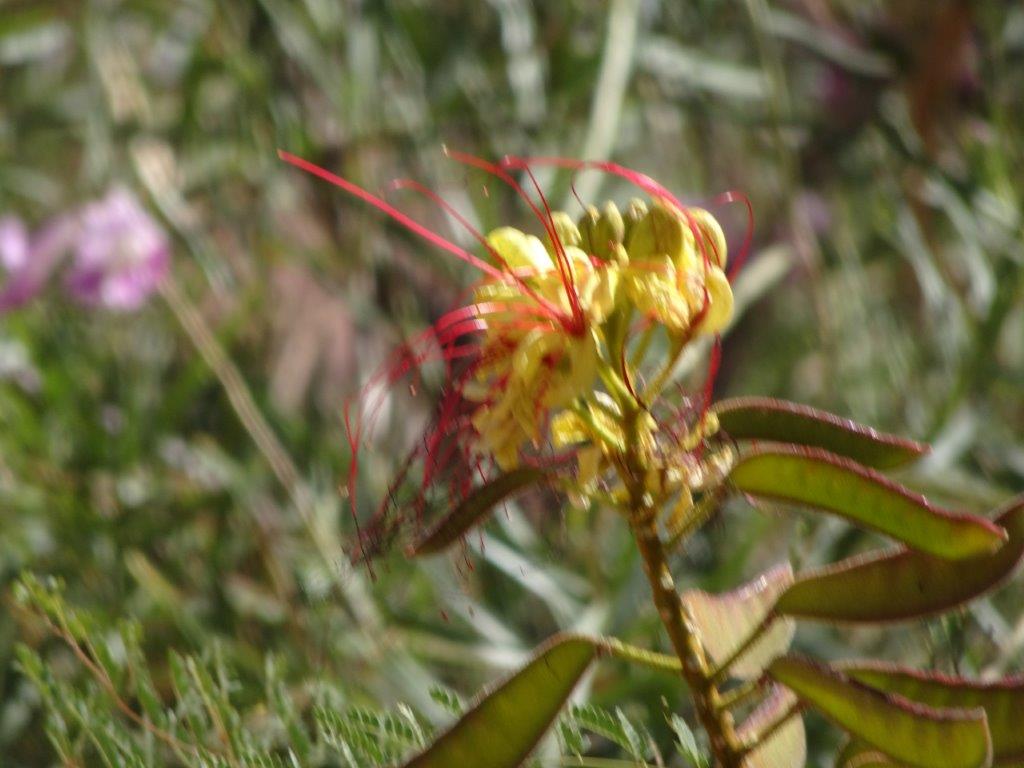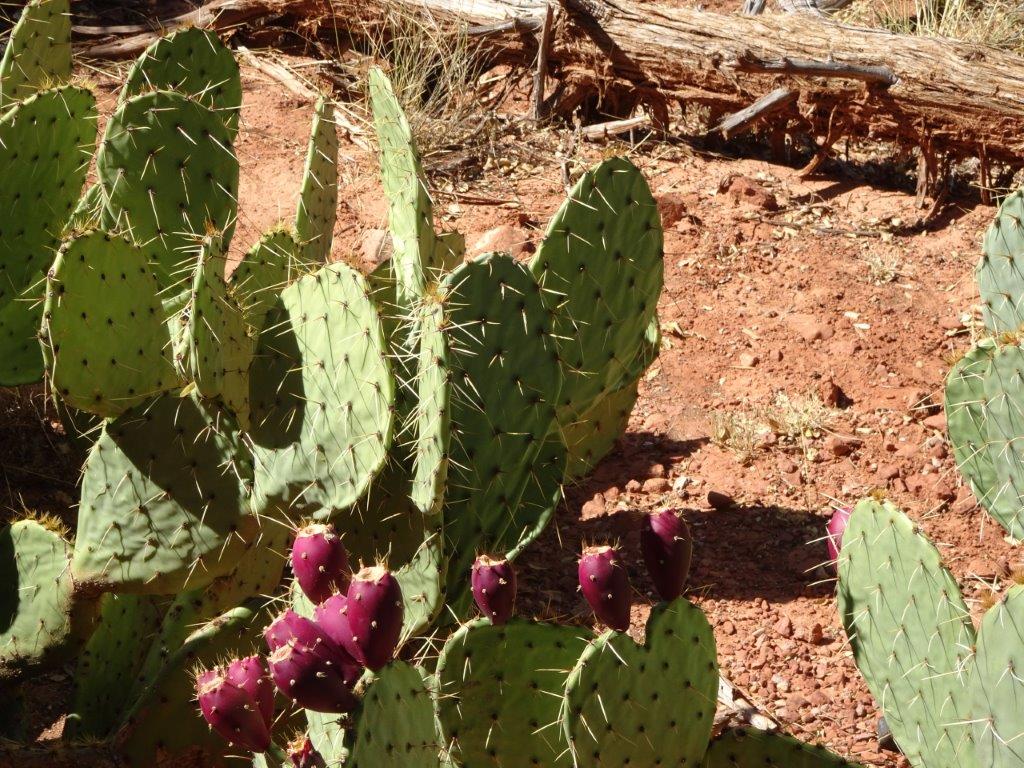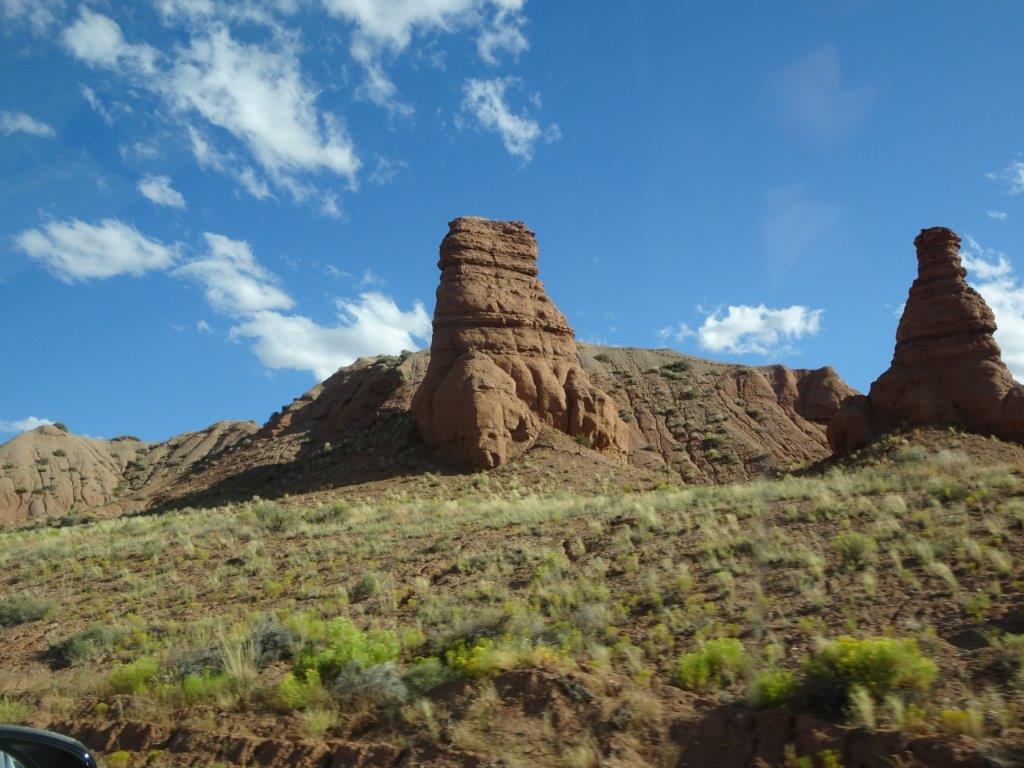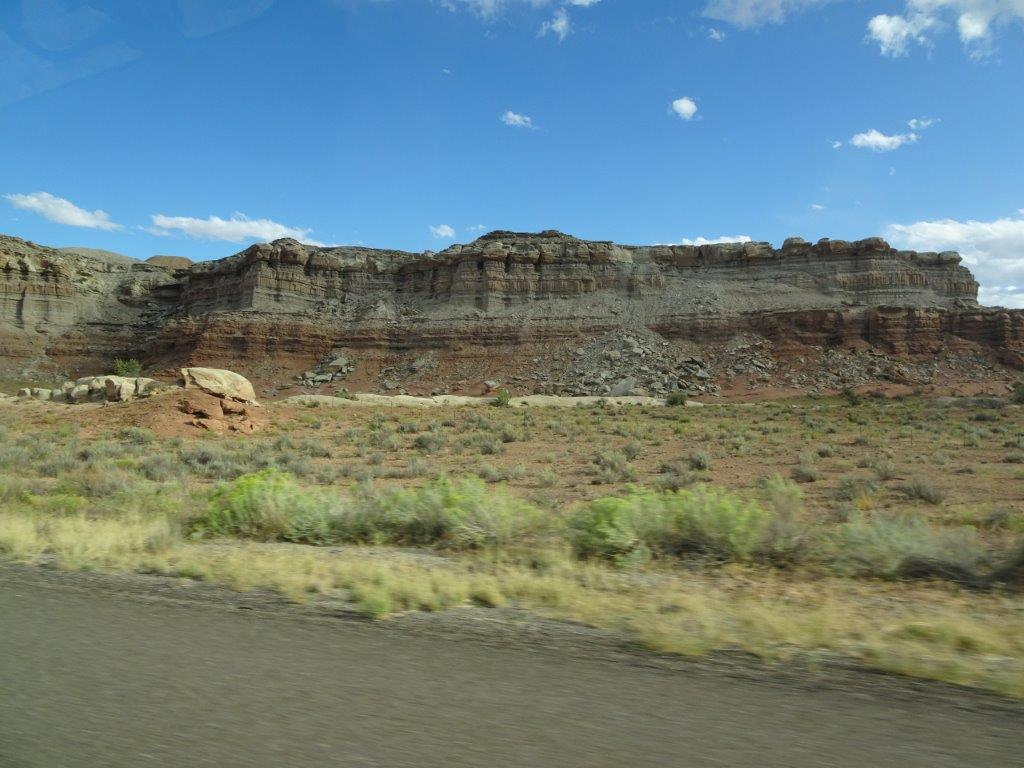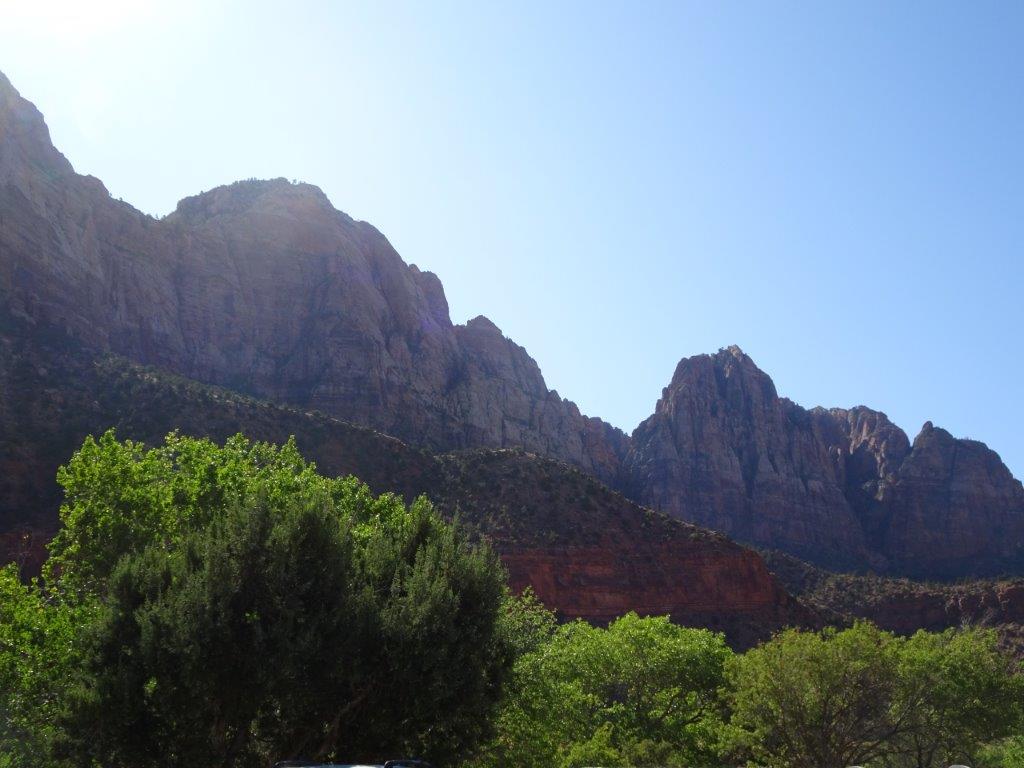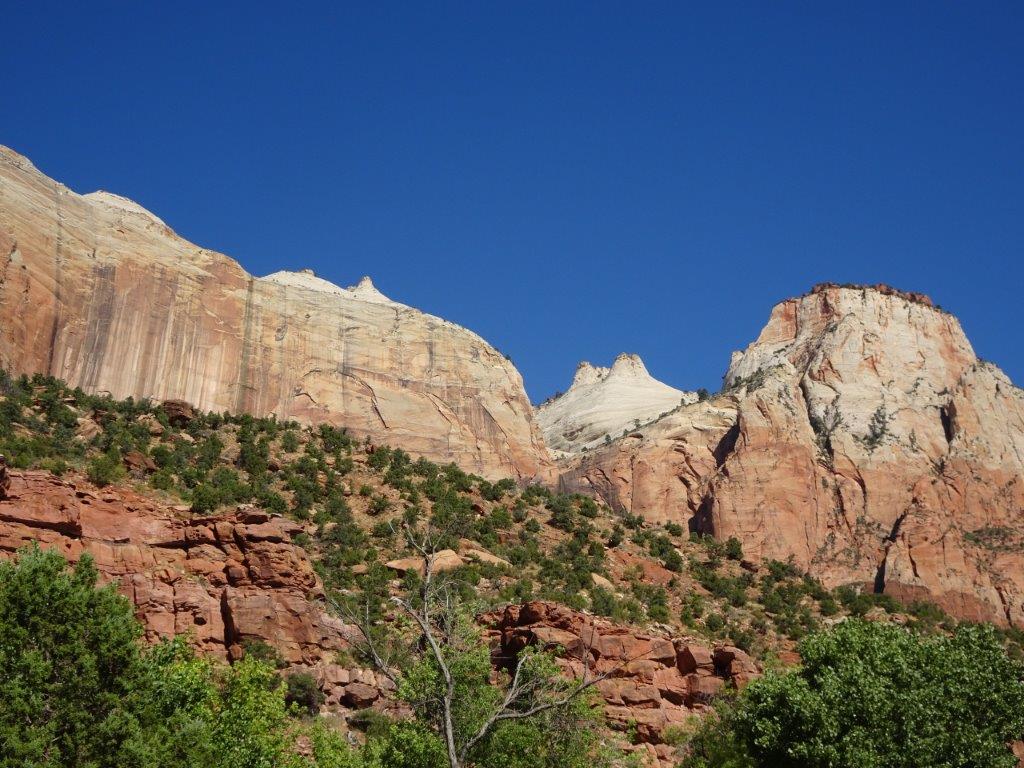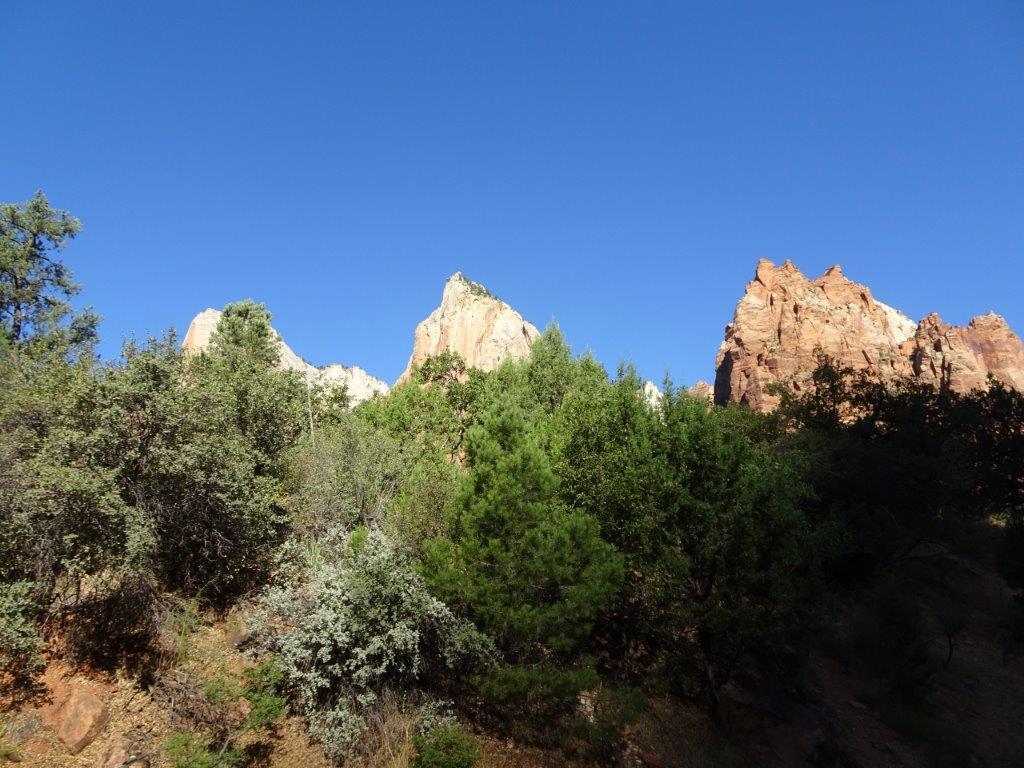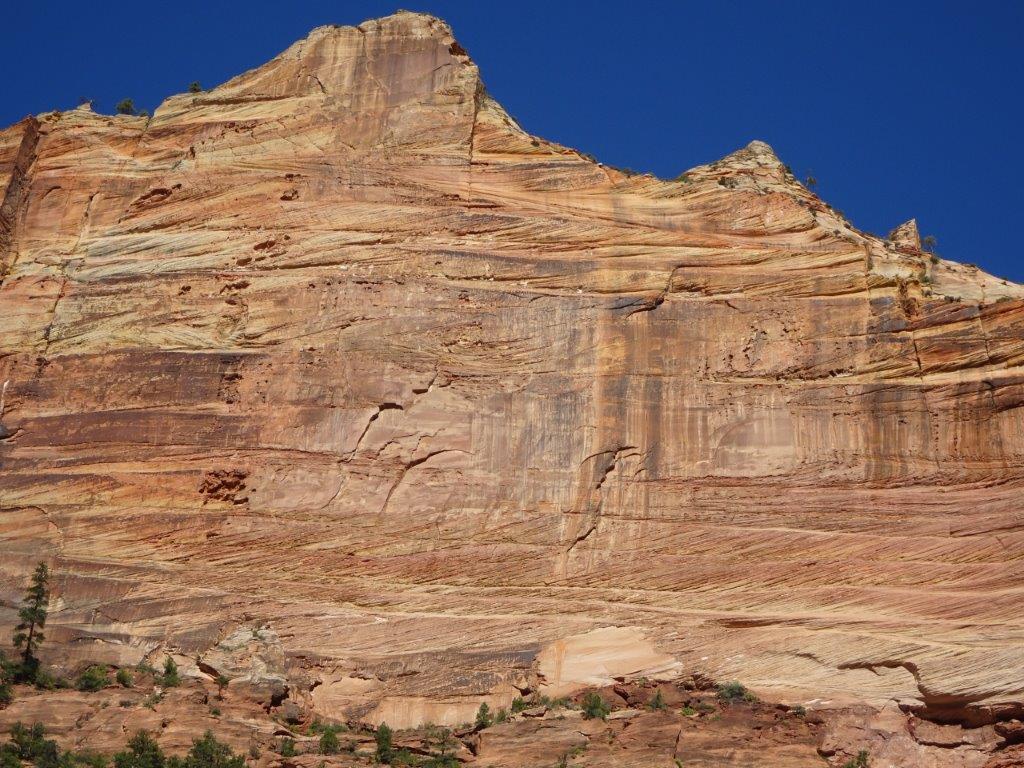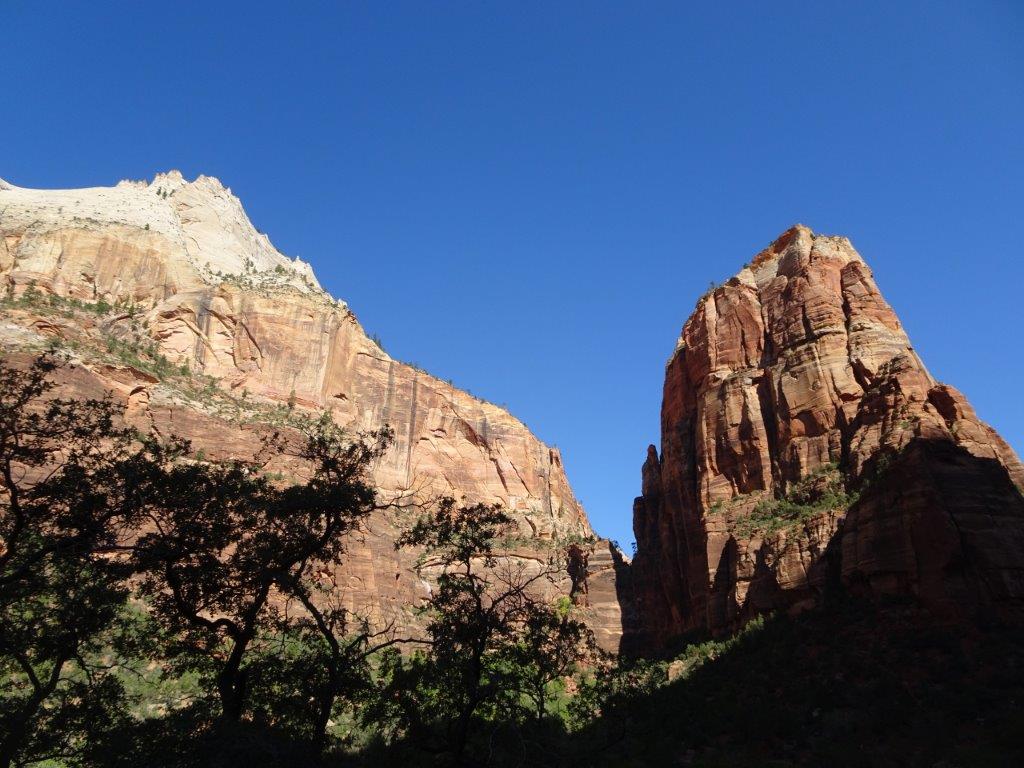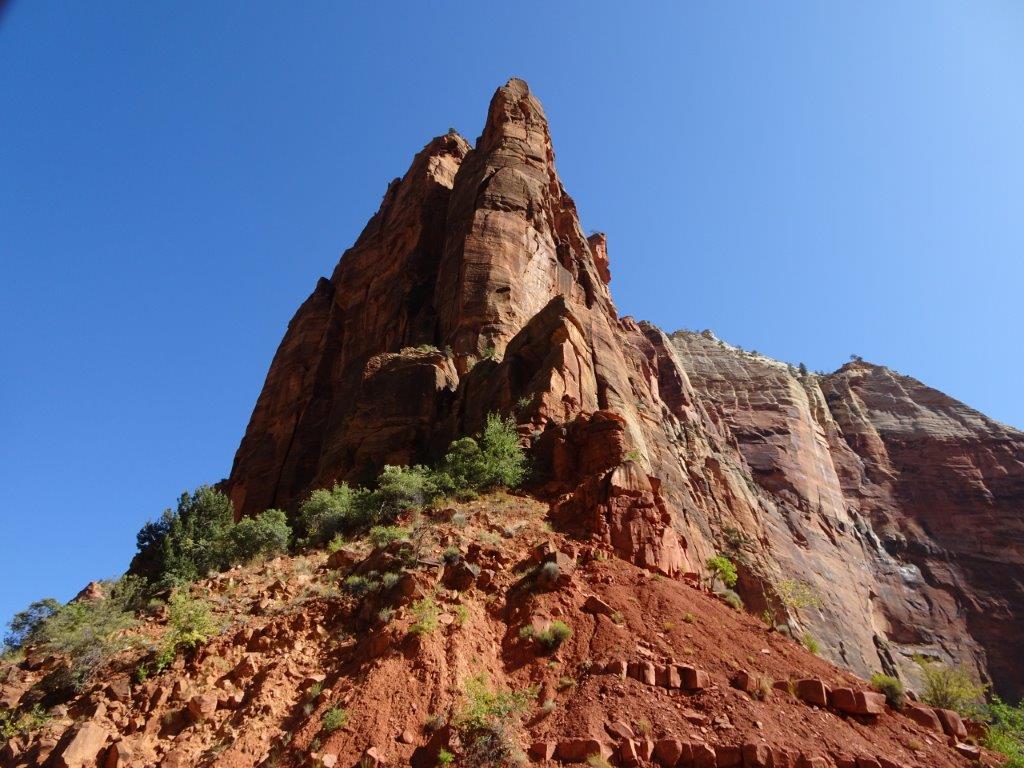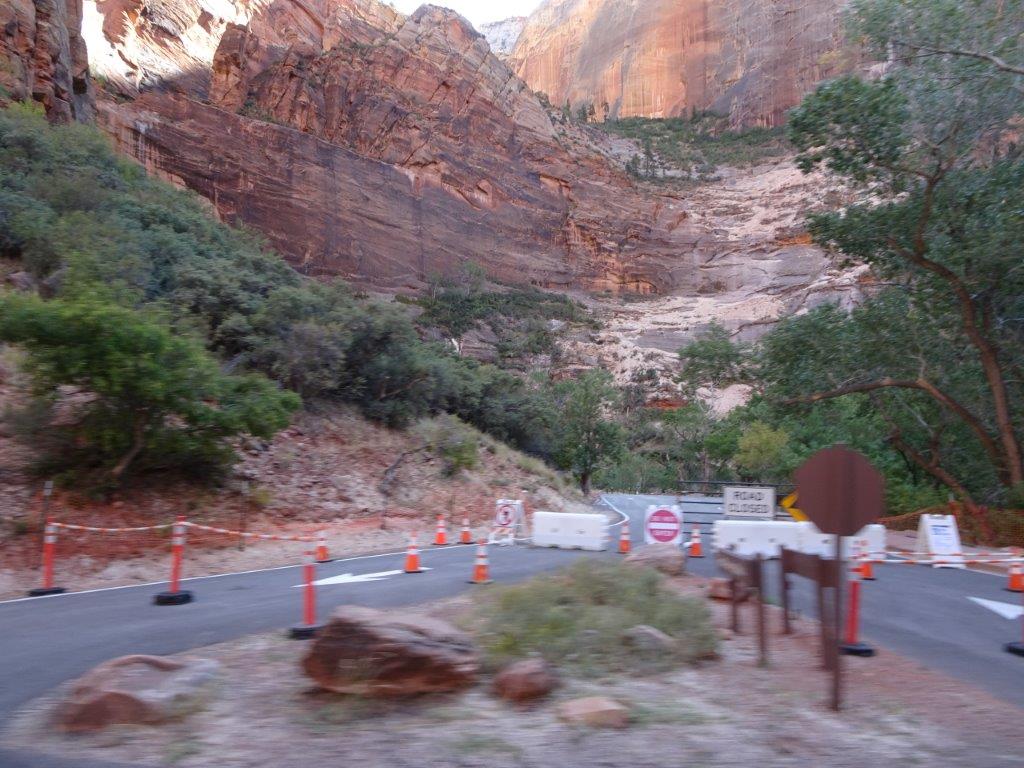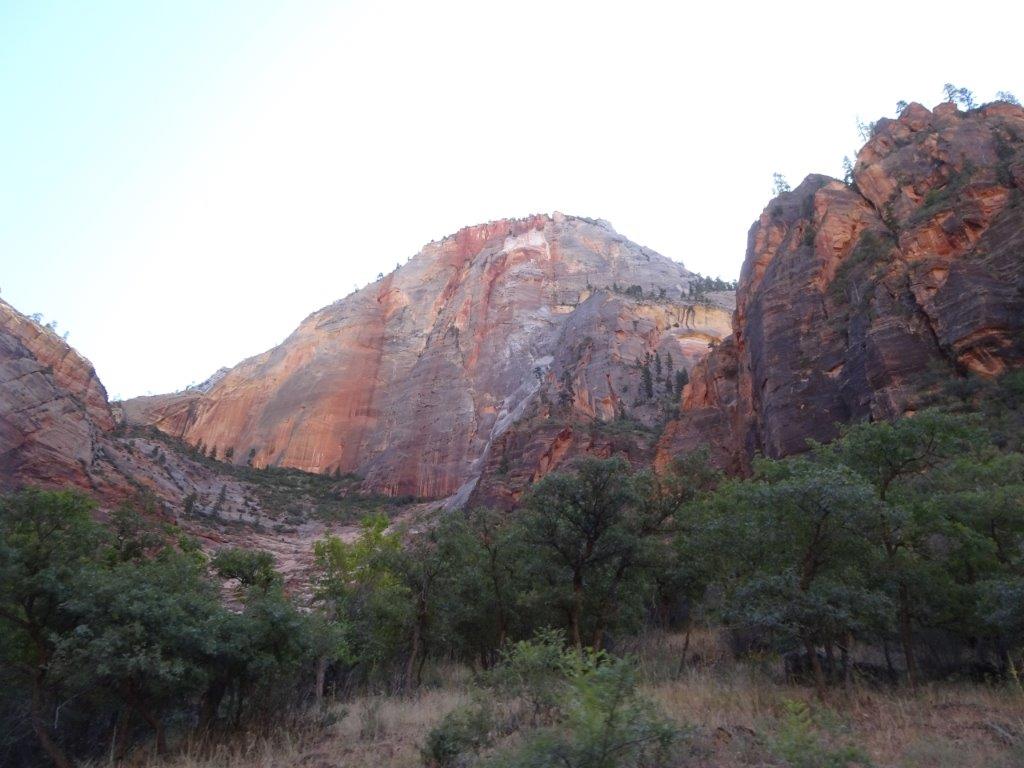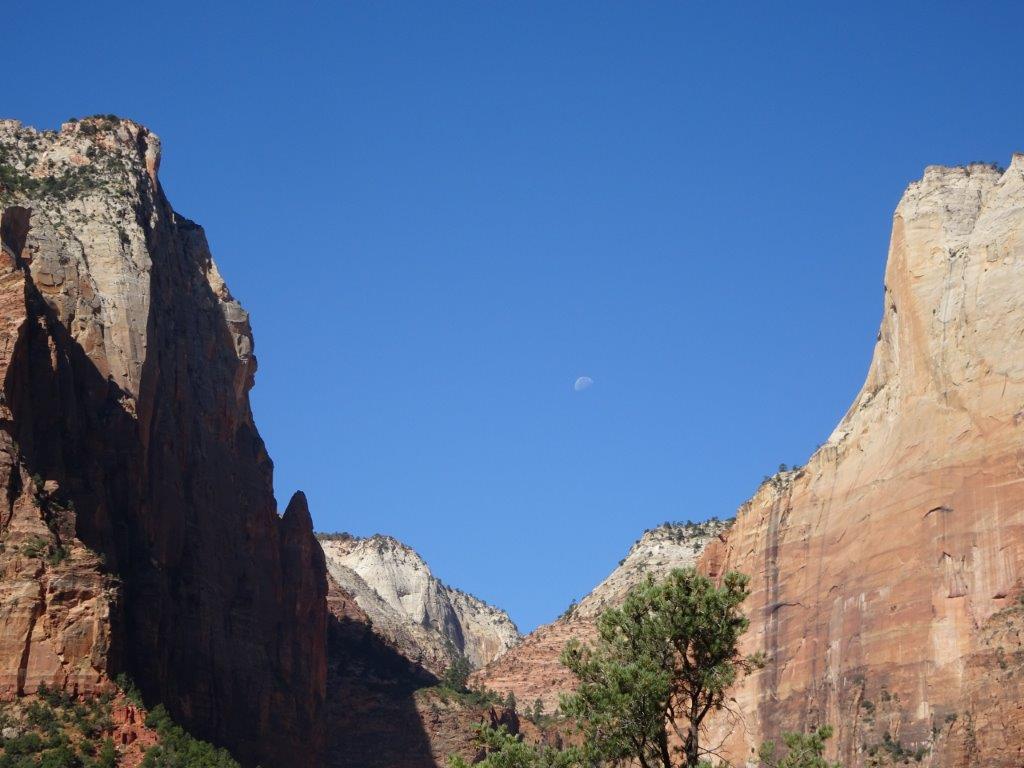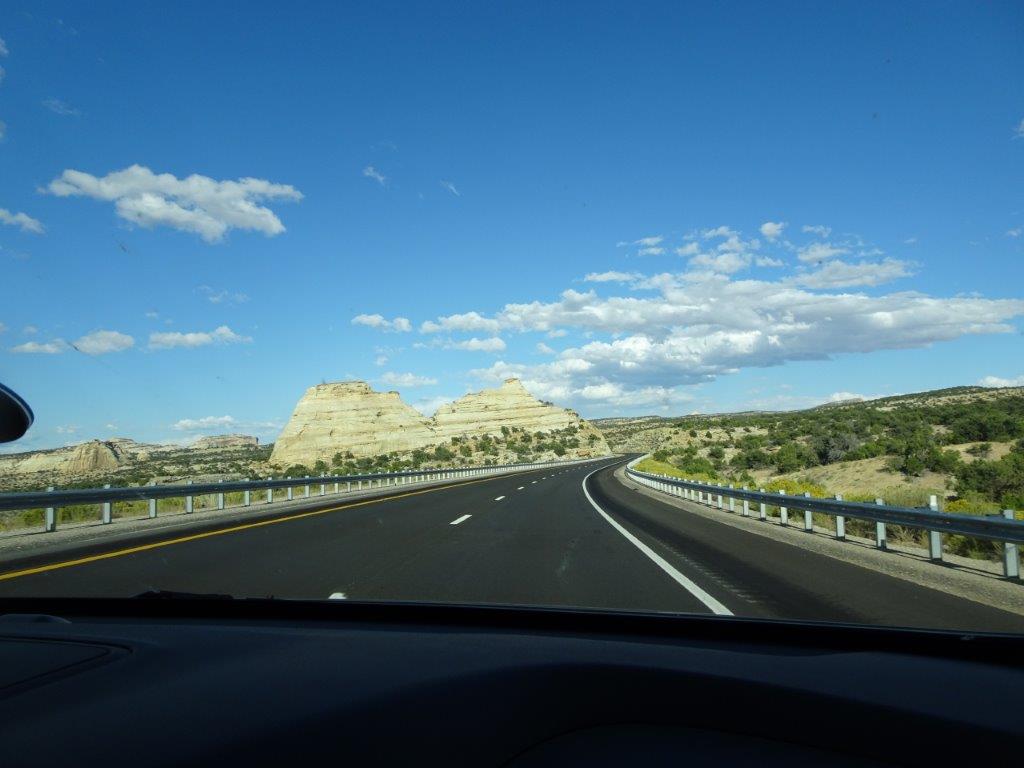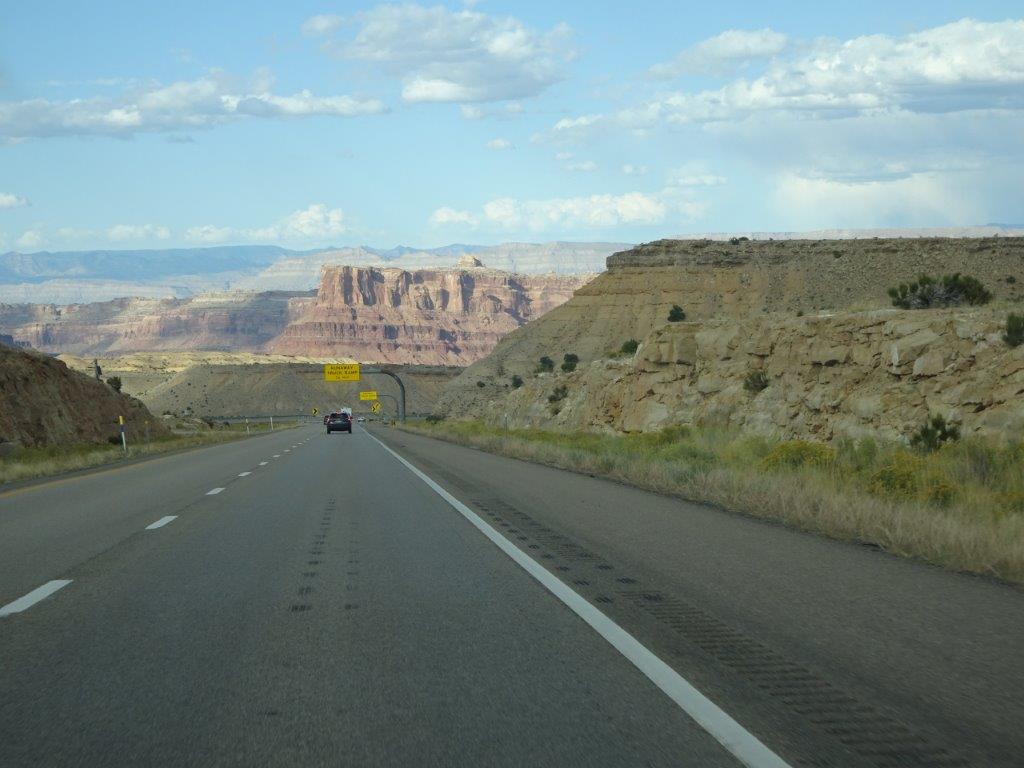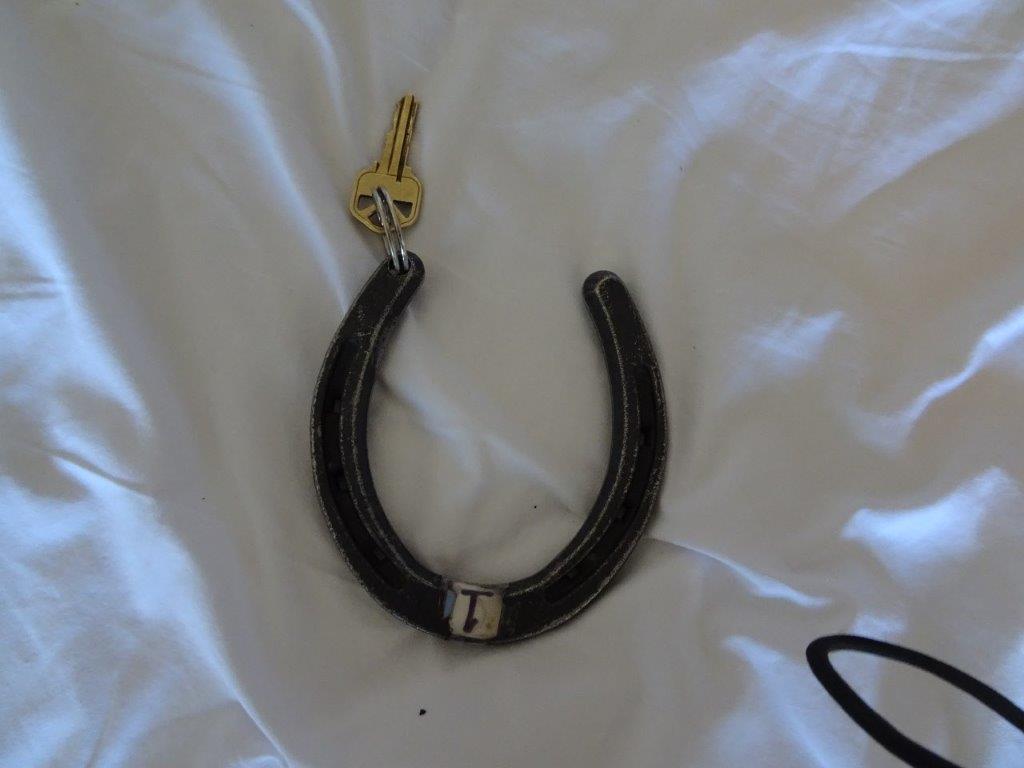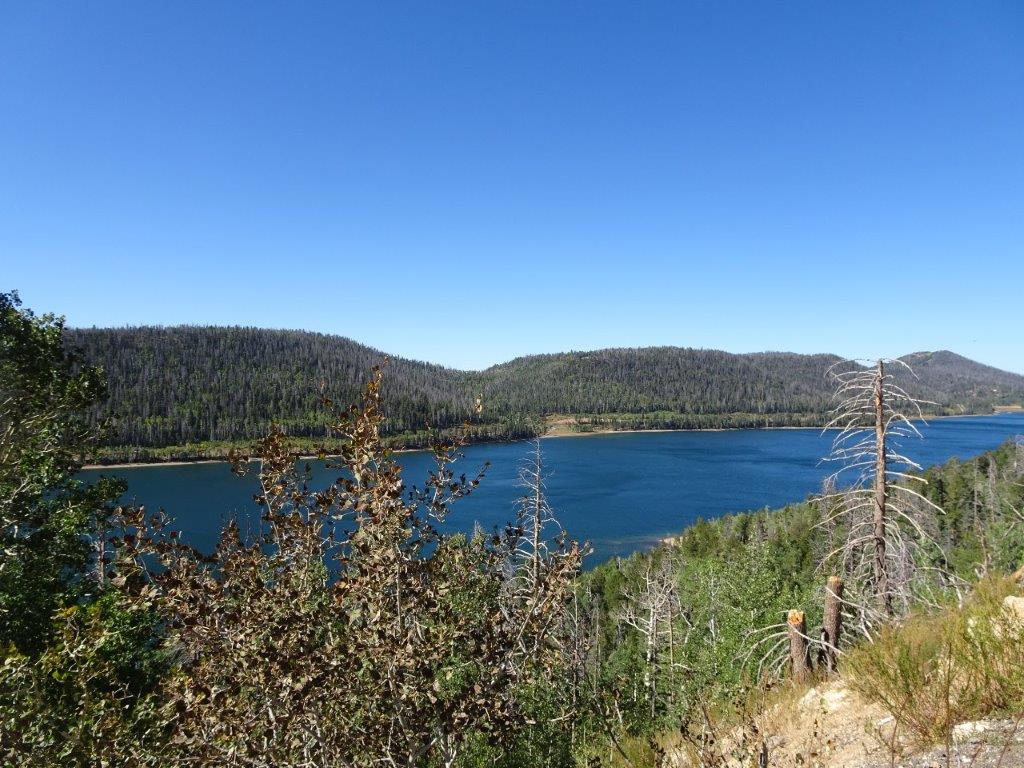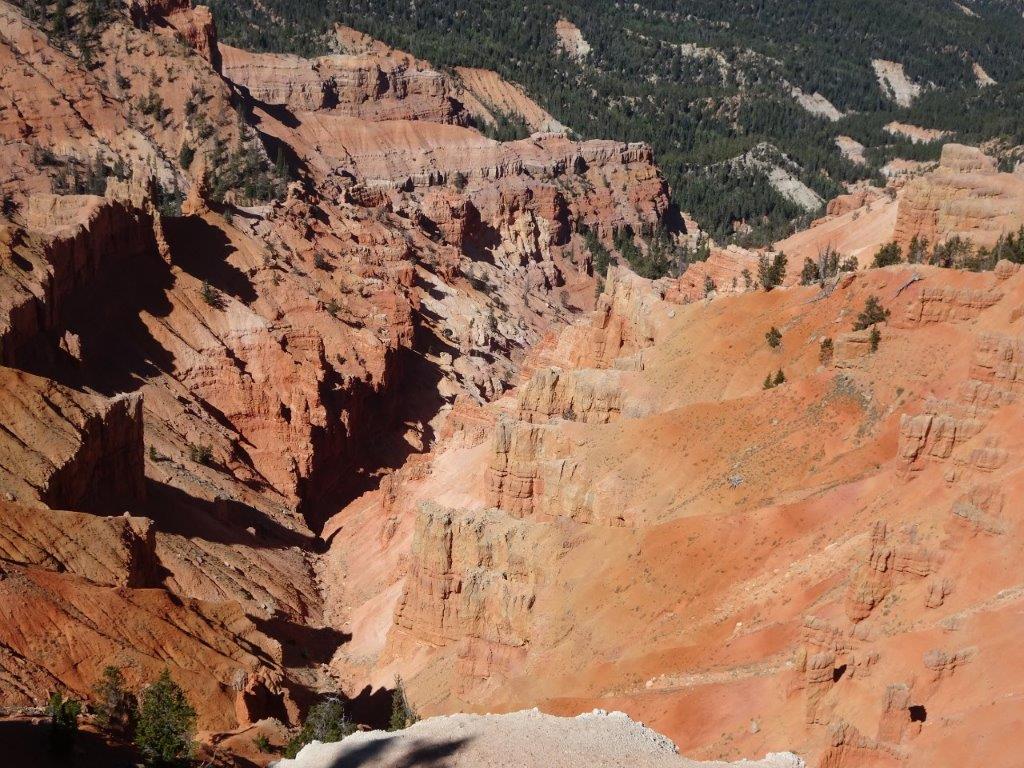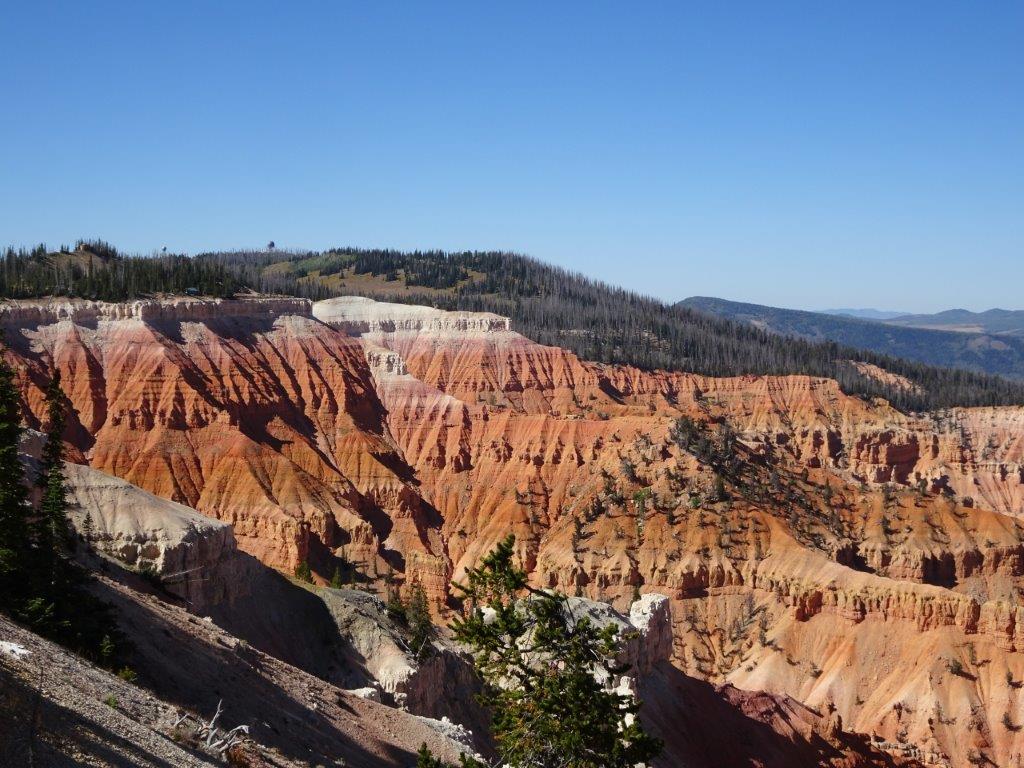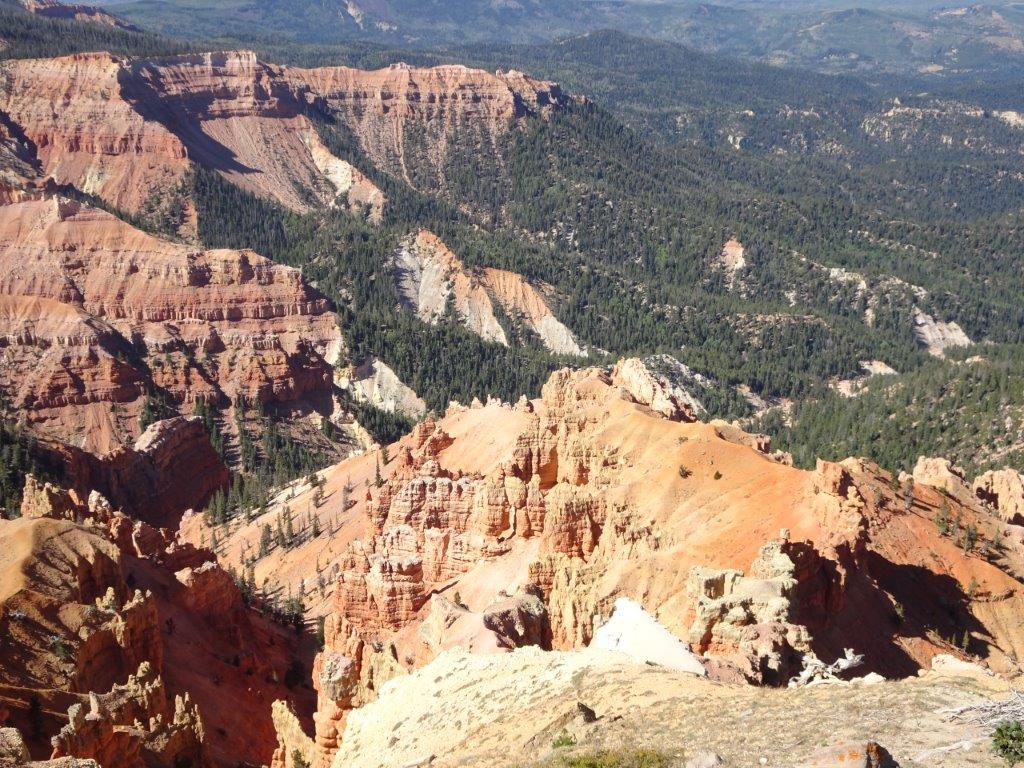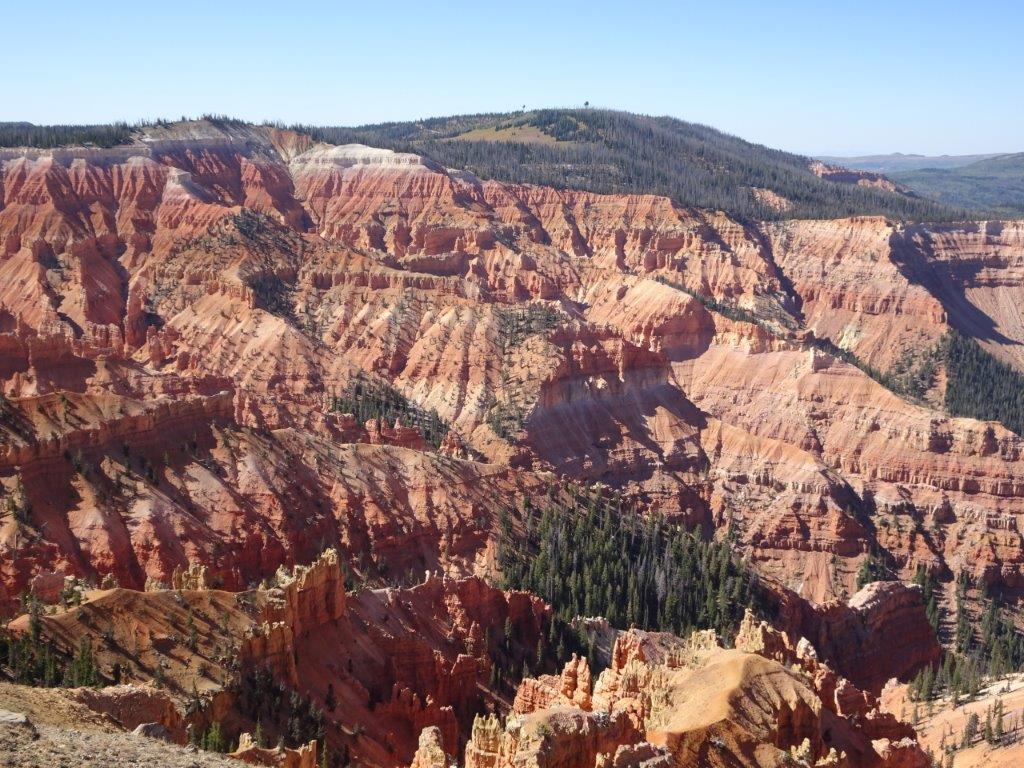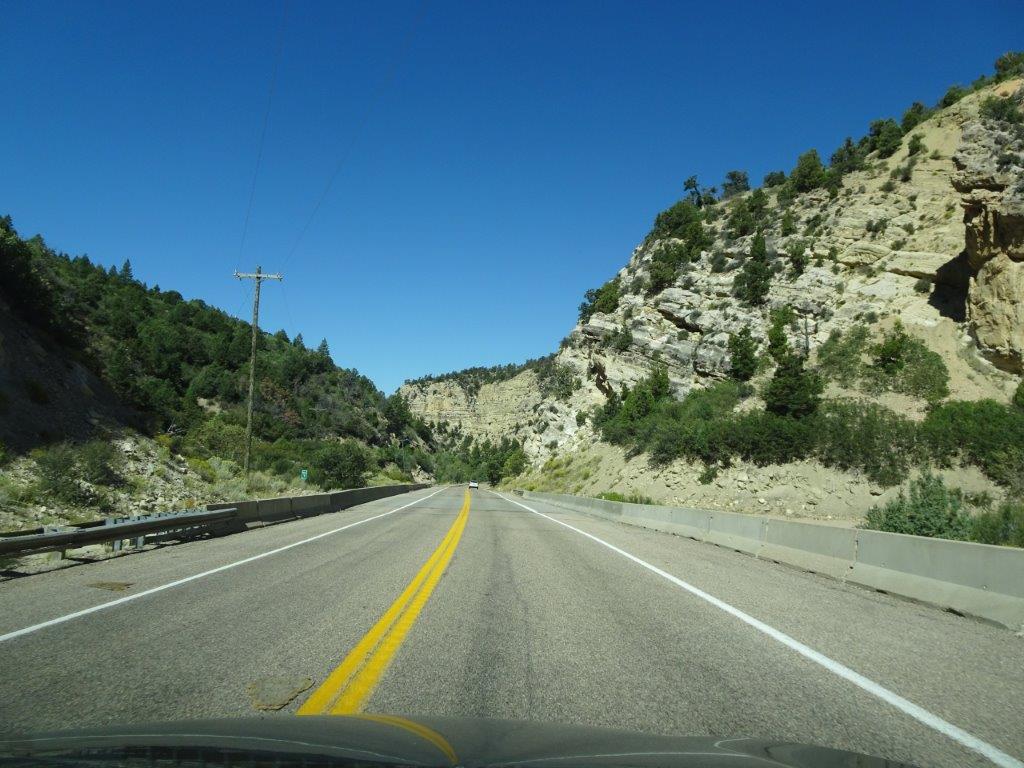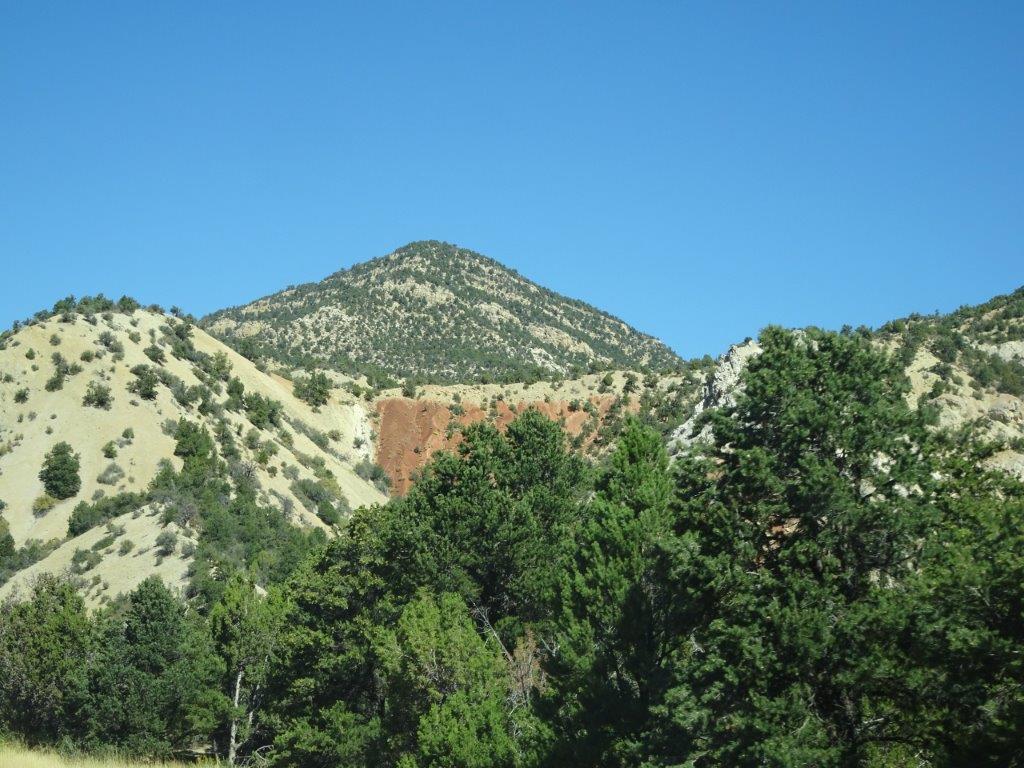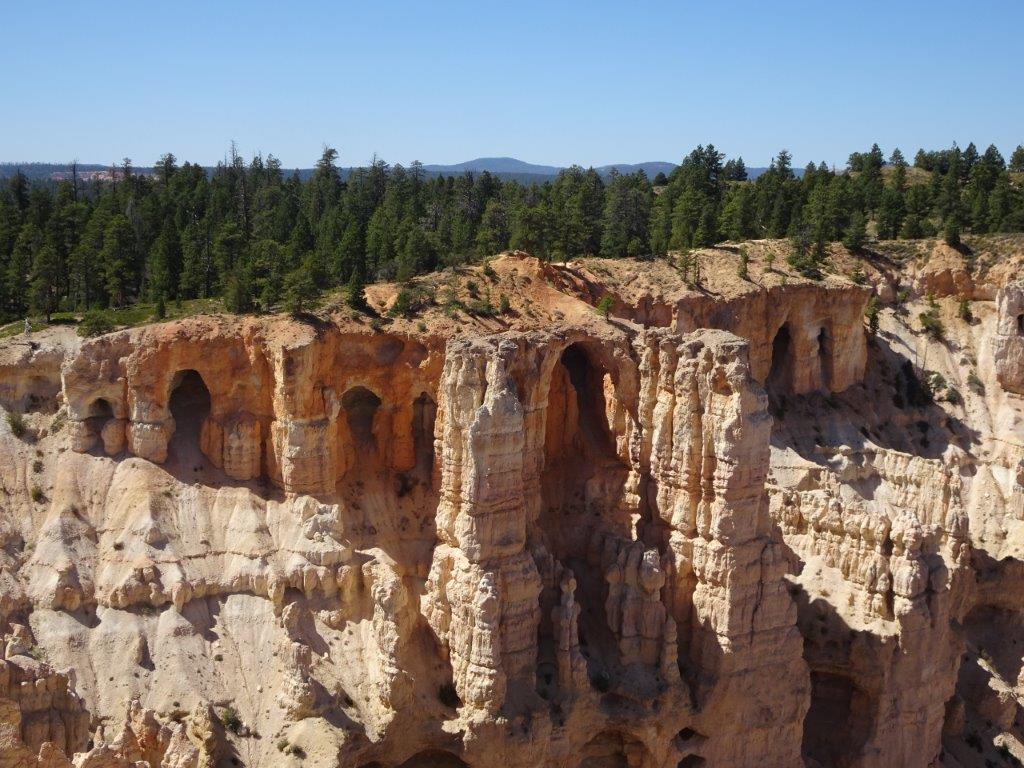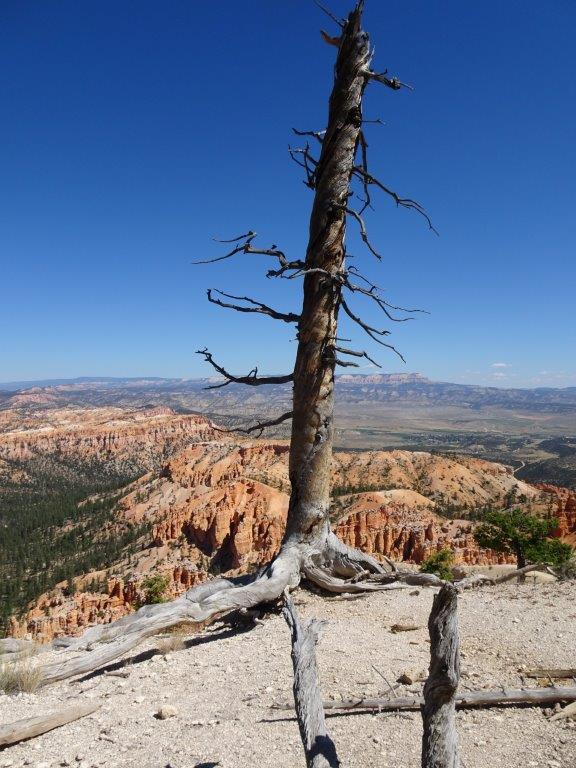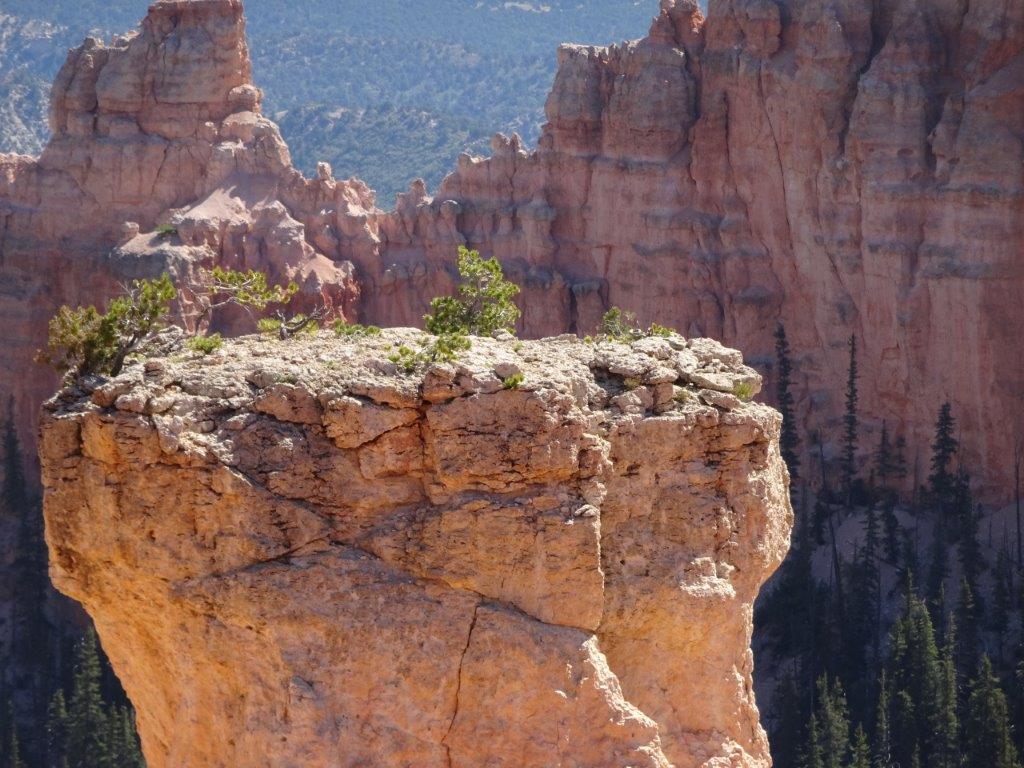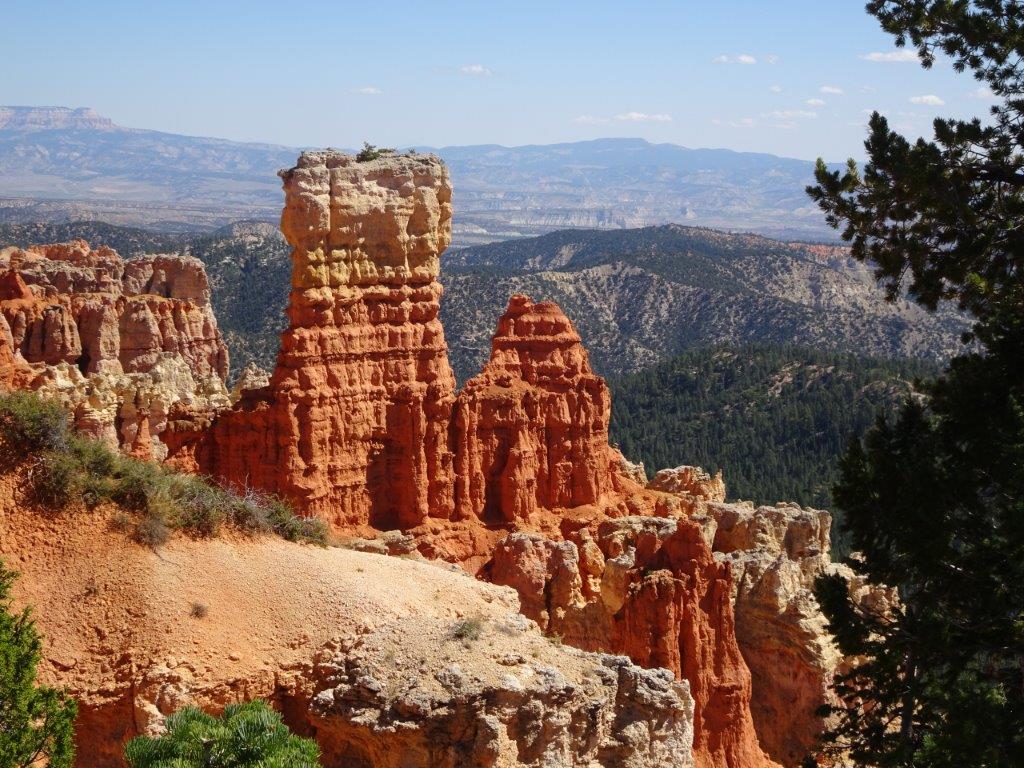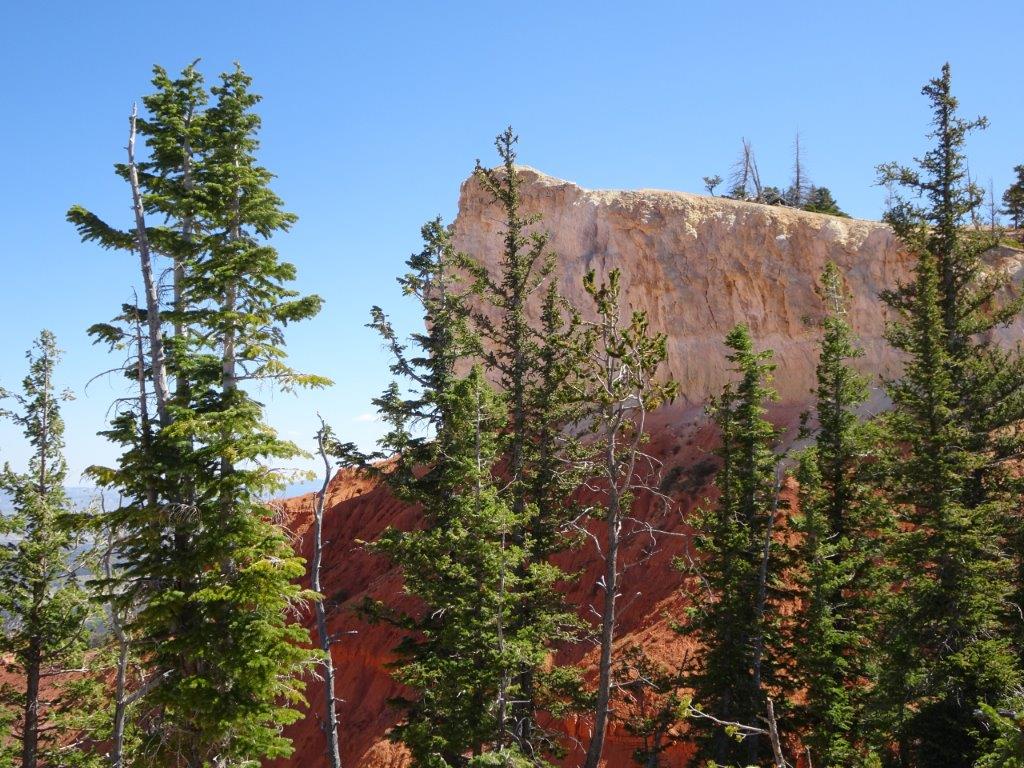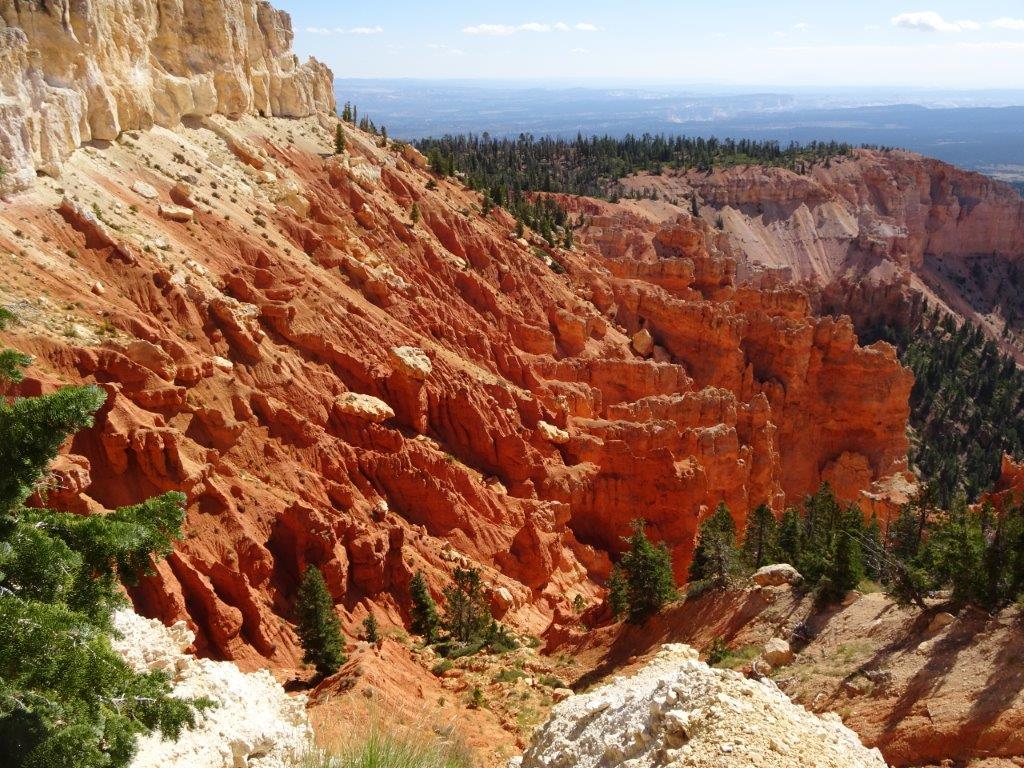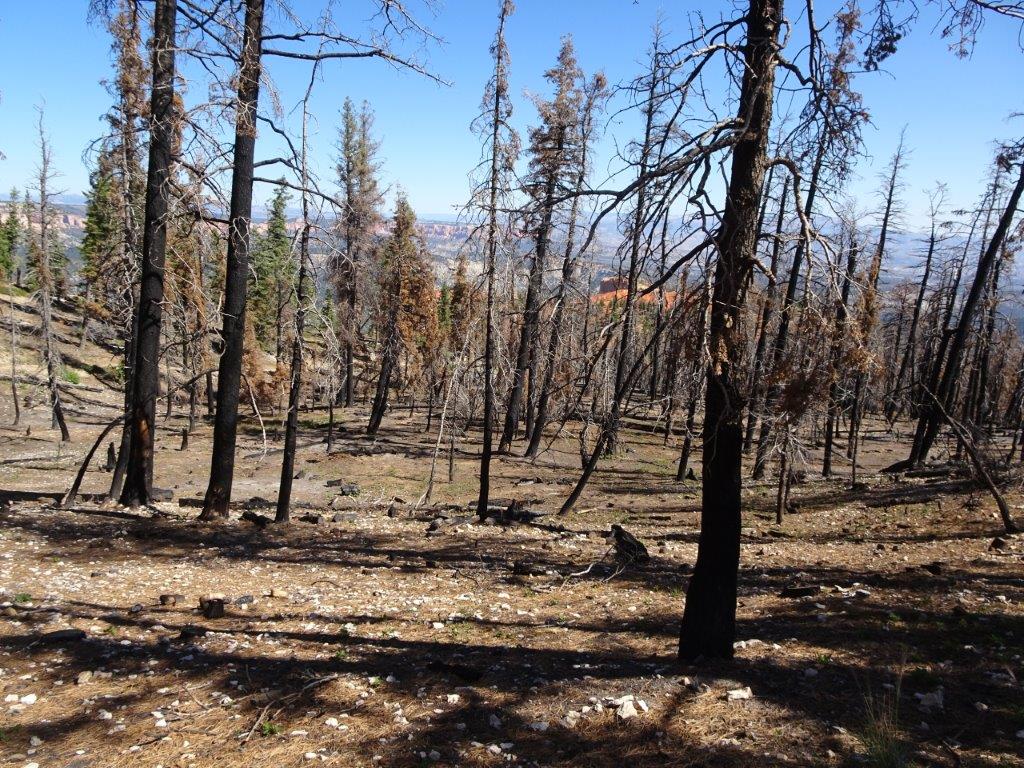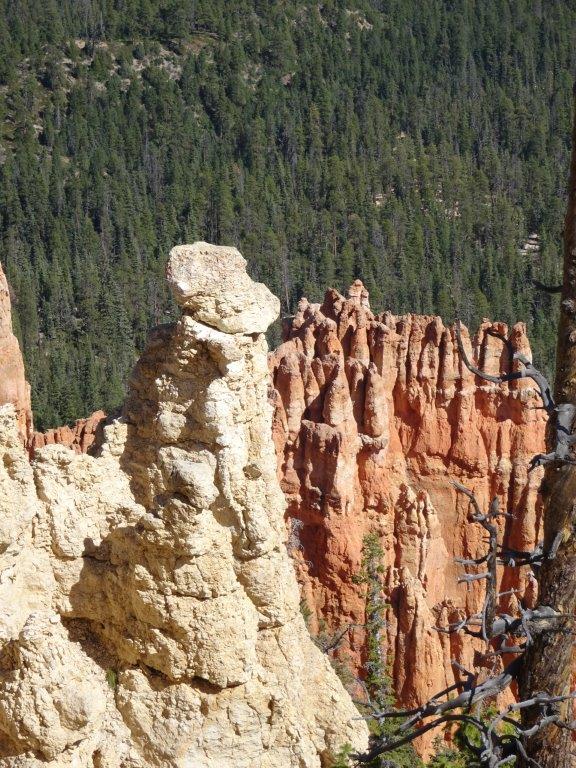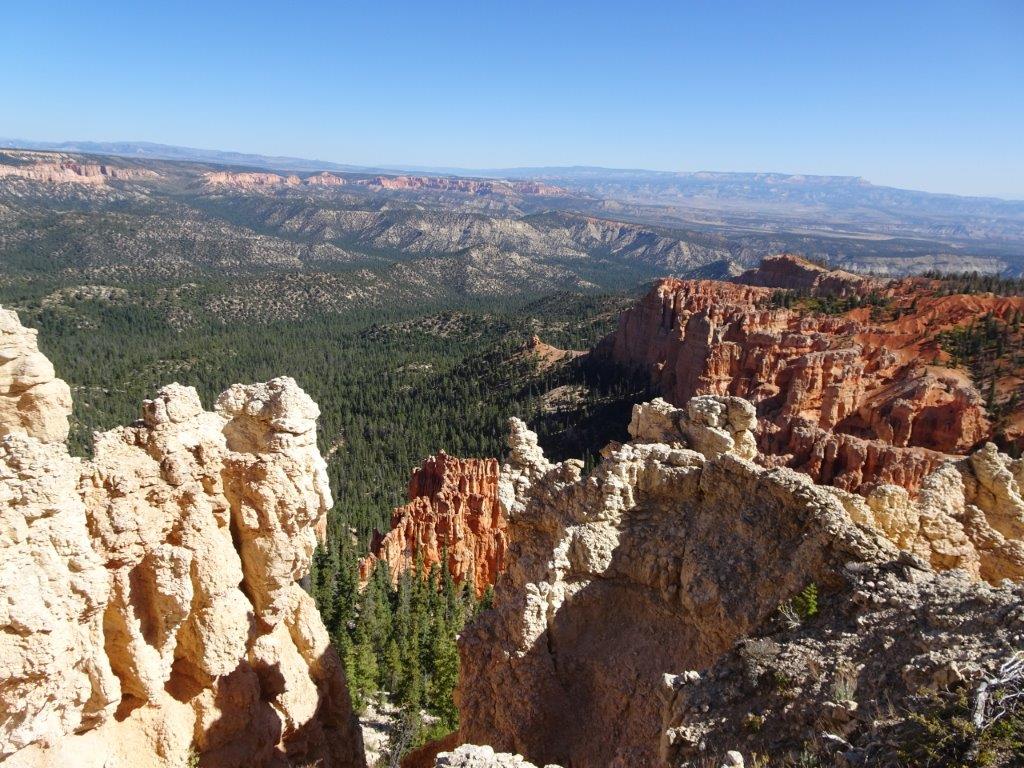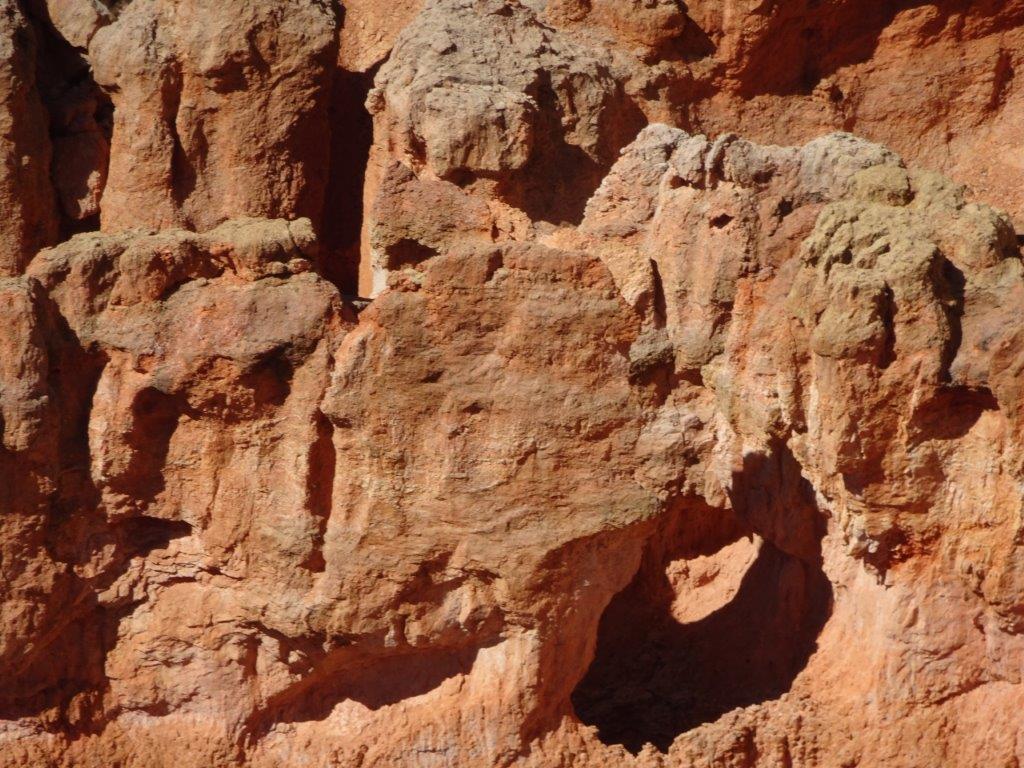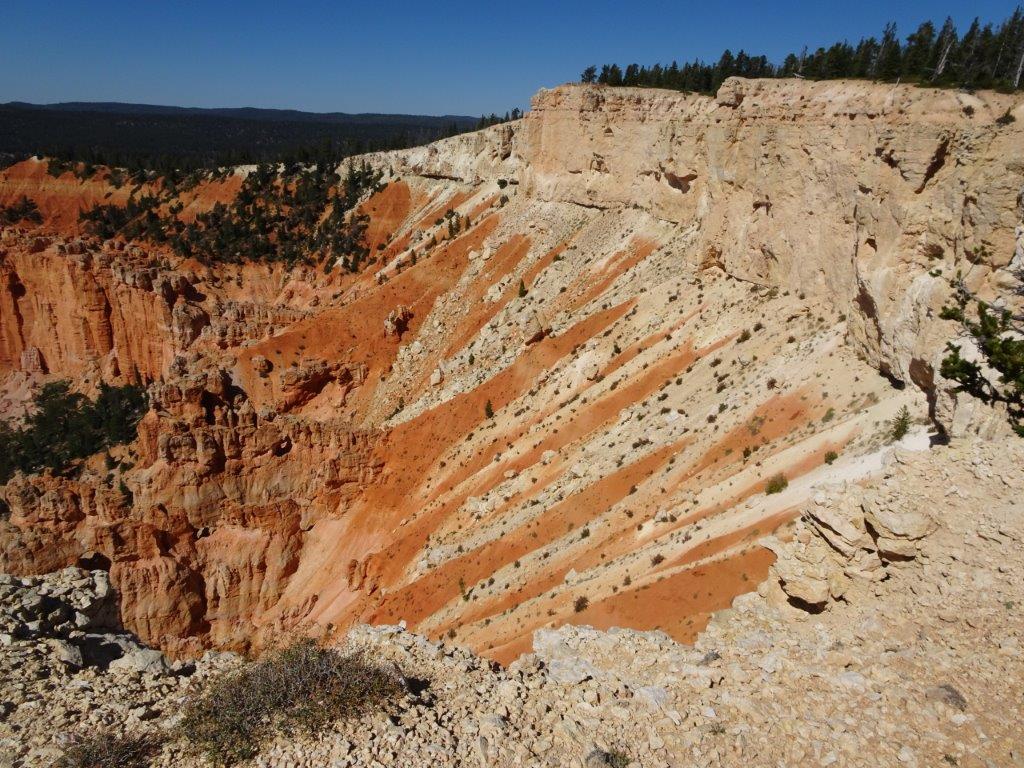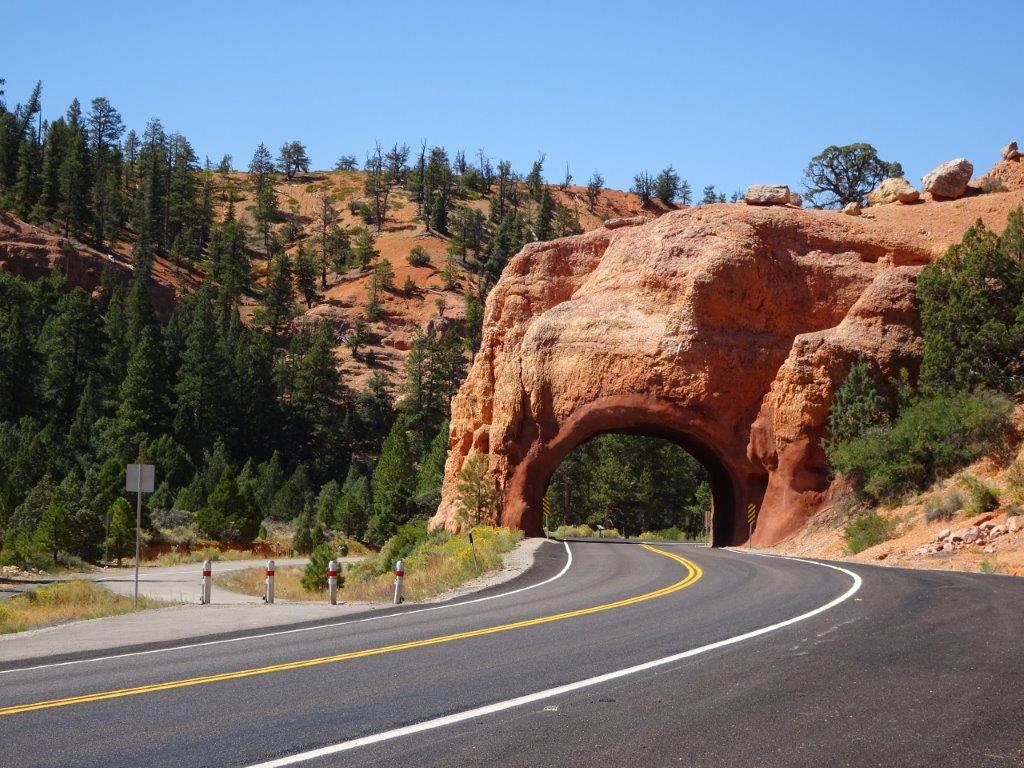Woke up to a brighter but still overcast day, with storing winds. There is a wind warning and surge warning for the area! The temperature had dropped to around 12C (54F). We lazed around the hotel for a couple of hours after breakfast, then went for a walk down to the waterfront. As you reach the road on the way down from the hotel you can see that the walls of the property have been decorated.

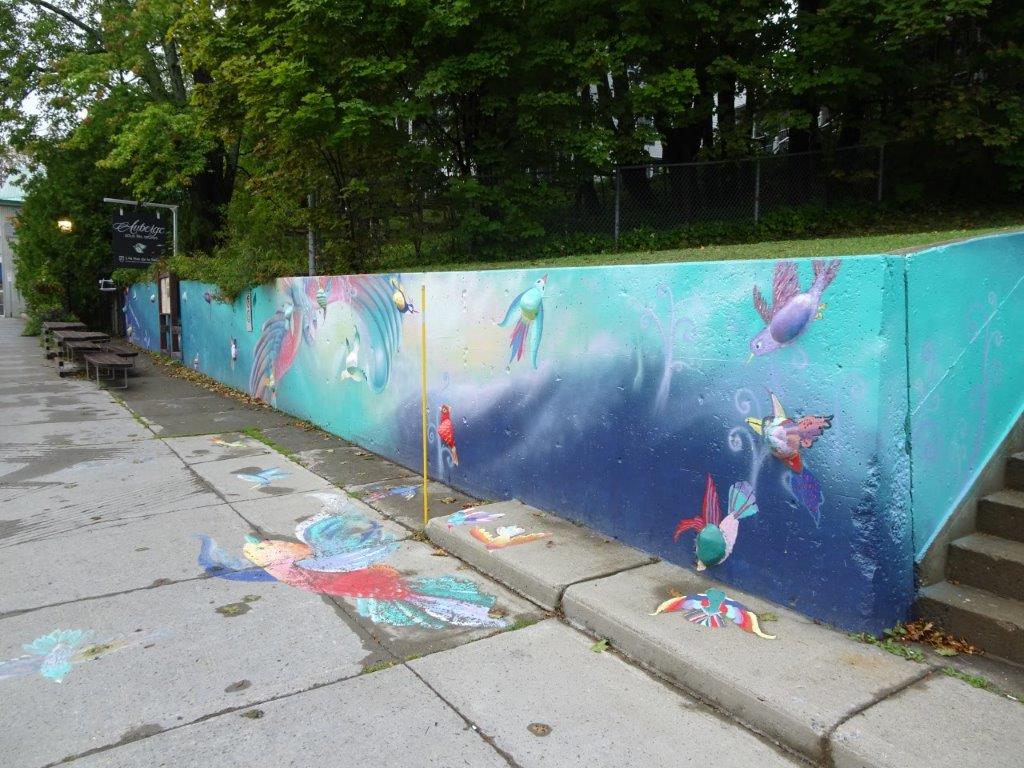
In addition the parking meters have been “knit bombed” according to Lyn
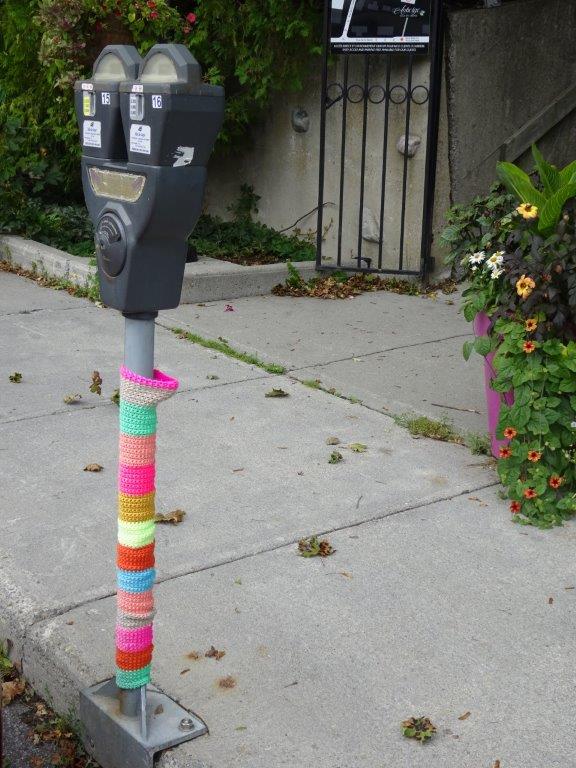
On the way down to the waterfront there was a nicely themed building.

Gaspé is know as the birthplace of Canada, Jacques Cartier landed here in 1534. There is a small heritage site on the waterfront to highlight this. Of course as we arrived there the rain started!
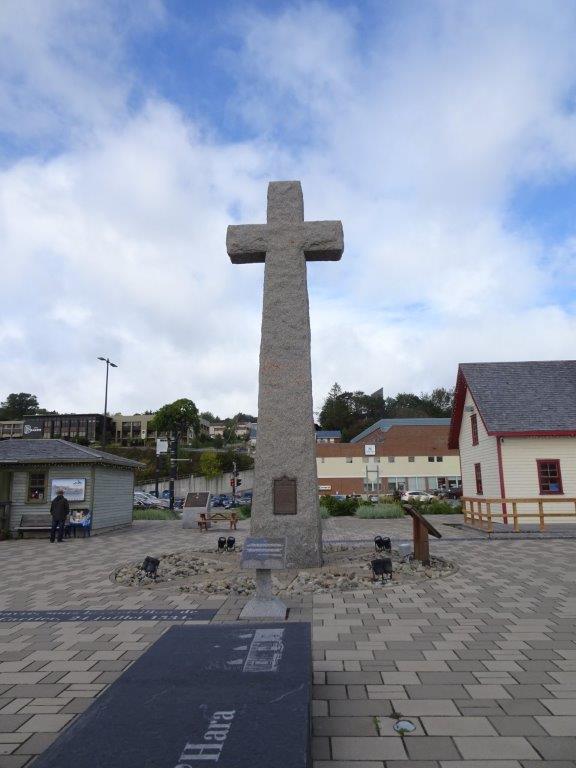
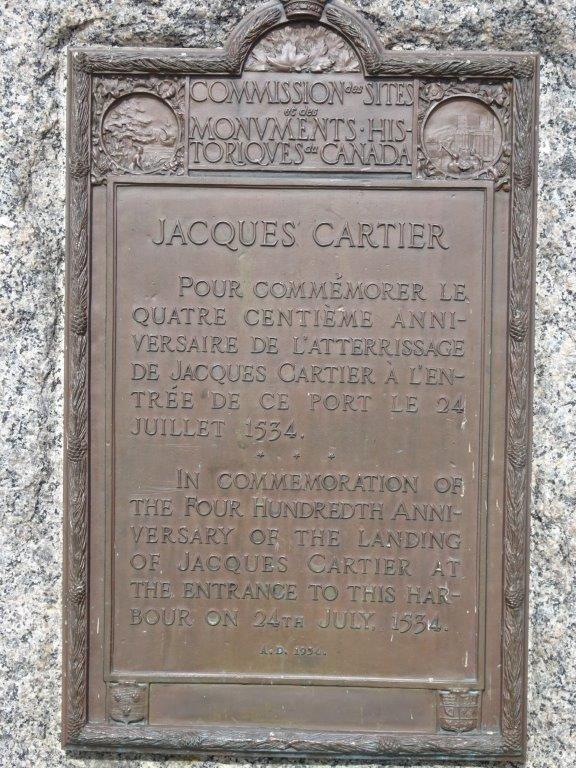
As part of the site there was a reconstruction of a general store


We did a little more walking, unfortunately the best way back to the Hotel was through the shopping Centre!
After lunch we headed for the Mi’kmaq interpretation Centre, about 10kms away. Of course as we arrived, the rain started again! One advantage of not speaking French was that we got our own English speaking guide for the tour. This was great, as we had a knowledgeable and passionate guide and we were able to ask a lot of questions. On the other hand the French group had upwards of 20 visitors. As I have done in the past, I’ll put a link (Miꞌkmaq – Wikipedia) to a Mi’kmaq information source, and just post a number of pictures
Below is a “cut away” of a wigwam built with birch bark
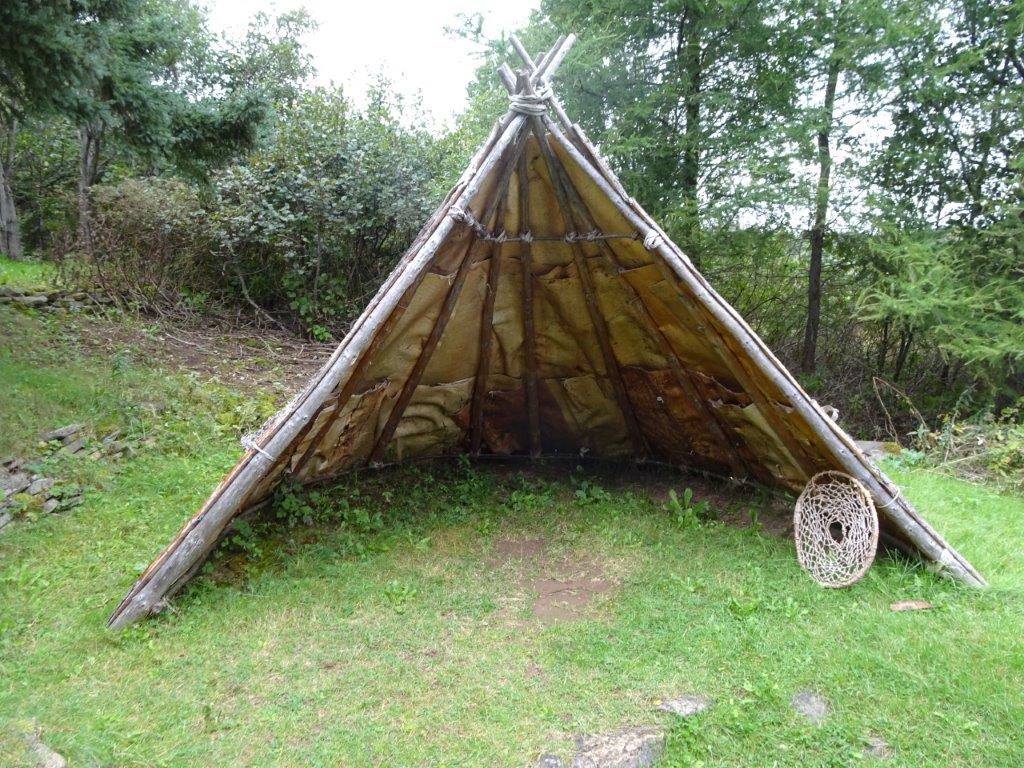
Below is the complete structure.
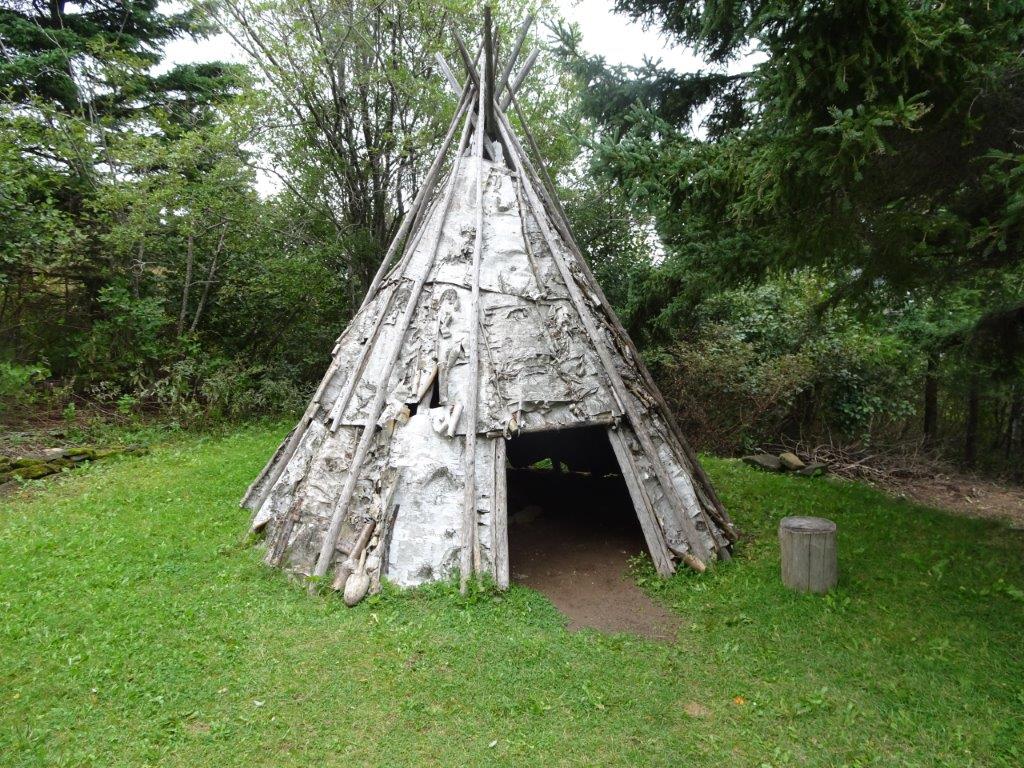
Below is the communal hut, built in the same manner as the wigwam

Back in the “pre-European” days, making fire was a problem. The only method available was to use a small bow like structure to rotate a cedar stick on a cedar plank until the friction caused fire. The picture below may give an idea, but it is a little blurry due the the amount of effort our guide was putting into spinning the stick!
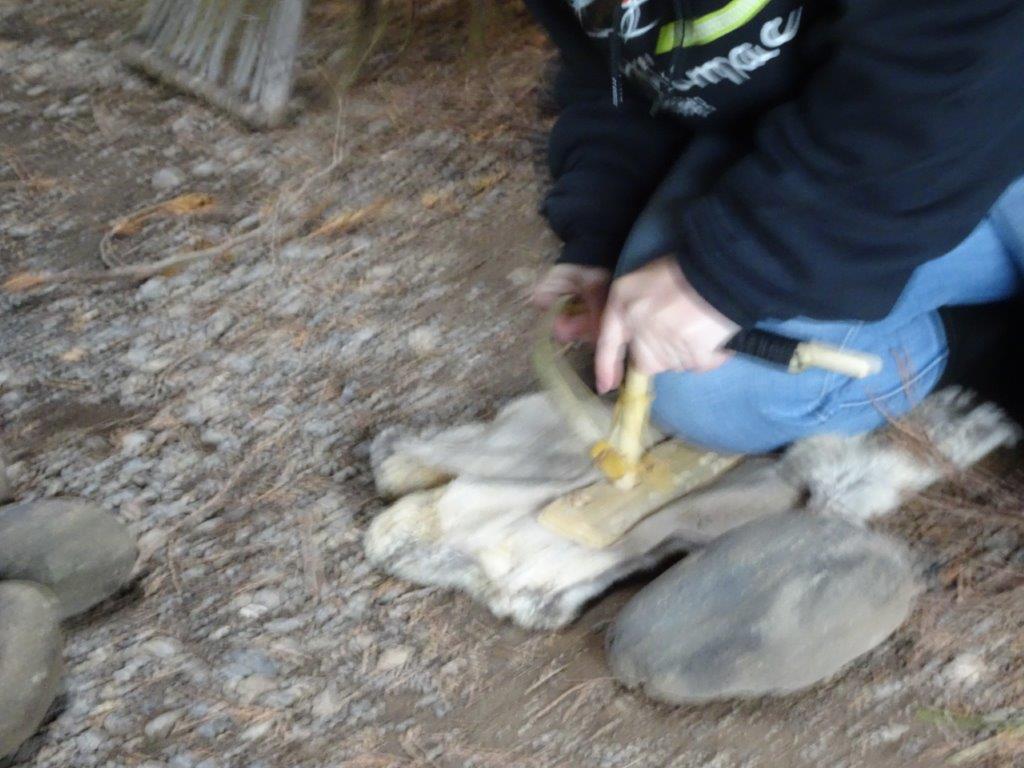
As creating fire was an arduous task the Mi’kmaq discovered a way of transporting it! There is a fungus that grows on a birch tree, they would take a lump of this about 2inches cube and make a small indentation in it where they would place a small ember. The fungus would burn VERY slowly and the ember would remain active for up to to two weeks.
When the Europeans arrived two of the most important items the Mi’kmaq traded for were metal belt buckles and shirts. They discovered that by striking a piece of flint on the buckle that they could produce sparks, and by charring the cotton shirts they could use that as tinder. Fire making became a whole lot easier.
The Mi’kmaq were nomadic, staying near the water for the summer and living primarily off fish and other sea food. In the winter they would move inland and hunt bear, moose etc. Like many aboriginal groups they believe animals were sacred and if killed all parts should have a use. Bones were used for tools, kind for clothing, meat for food etc. They even had a use for caribou brains!
Below is a picture of a bear trap, at the back is a box like structure big enough to house the bears head and shoulders. In the box they would put waste meat or fish pieces as bait. The bear would be attracted and stick its head in the box, in the process it would knock the branch that you can see between the horizontal and angled logs. This would cause the angled log to fall, killing the bear.
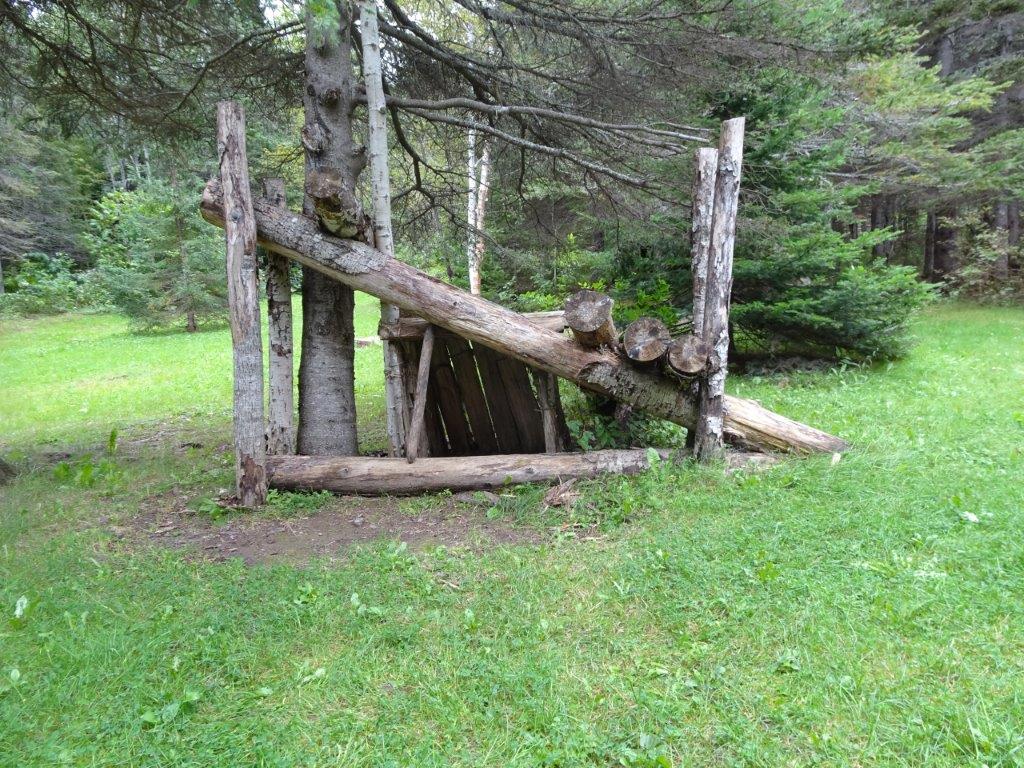
Finally a couple of pictures of a birch bark canoe, not yet finished.
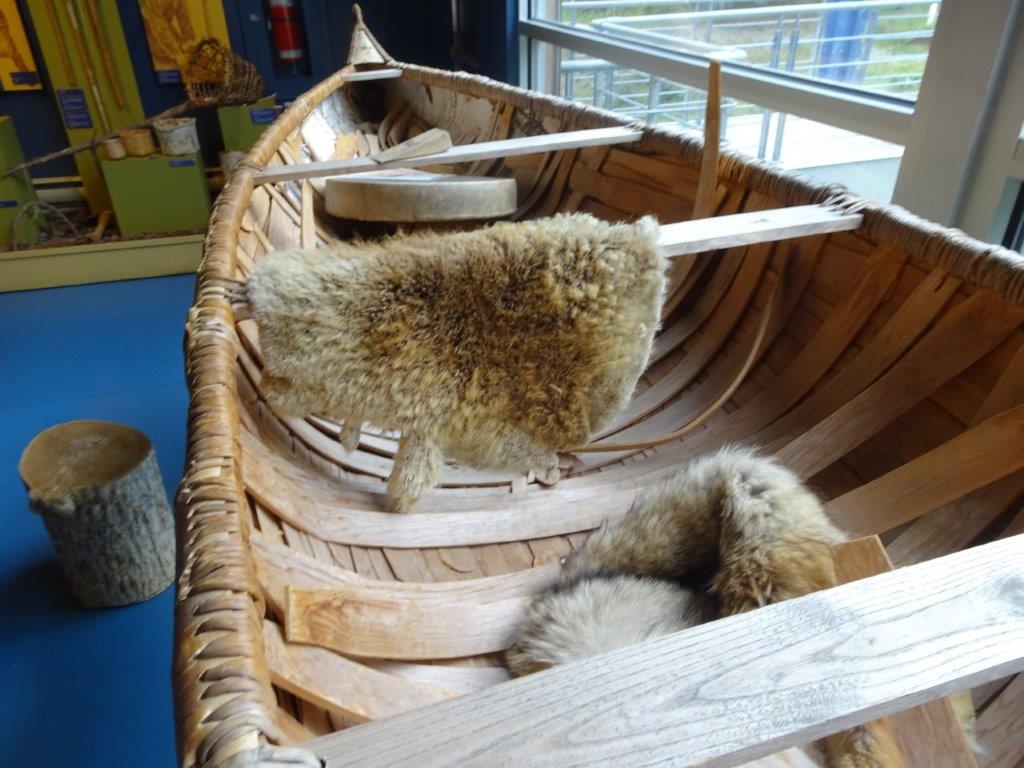
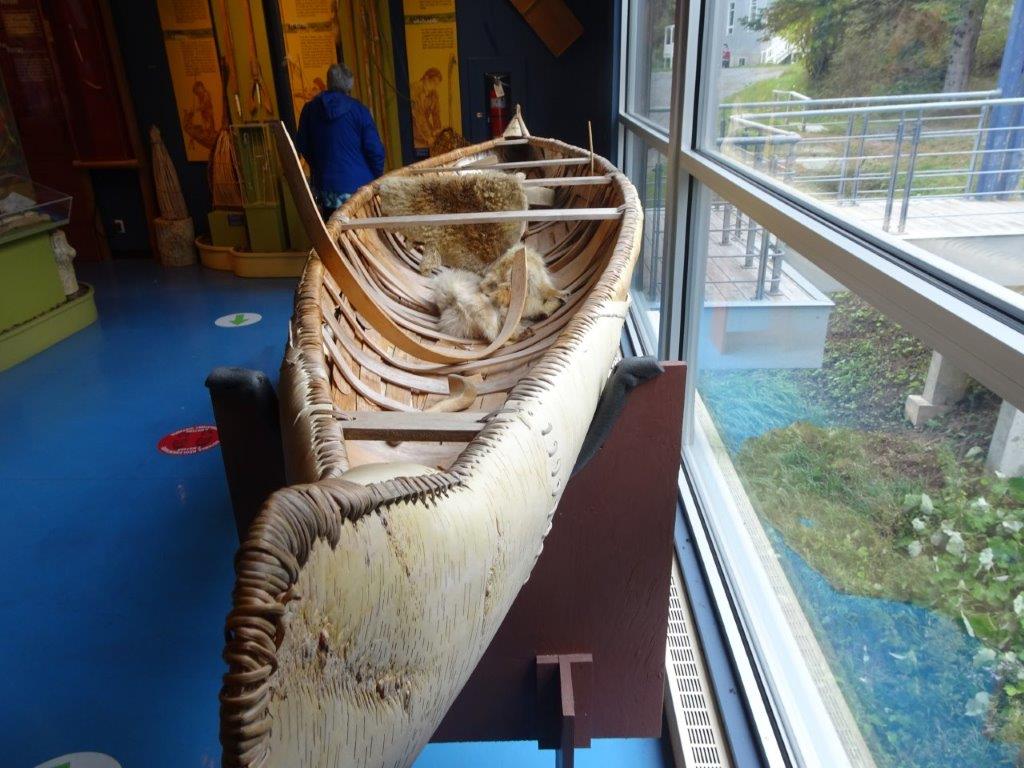
All in all a very good and informative trip.
Unfortunately, again harping back to the weather, our plans have had to change. Tomorrow was to have been a whale watching boat trip, but the forecast winds and sea conditions have scuppered that idea. I think Lyn has a couple of replacement trips in mind.

